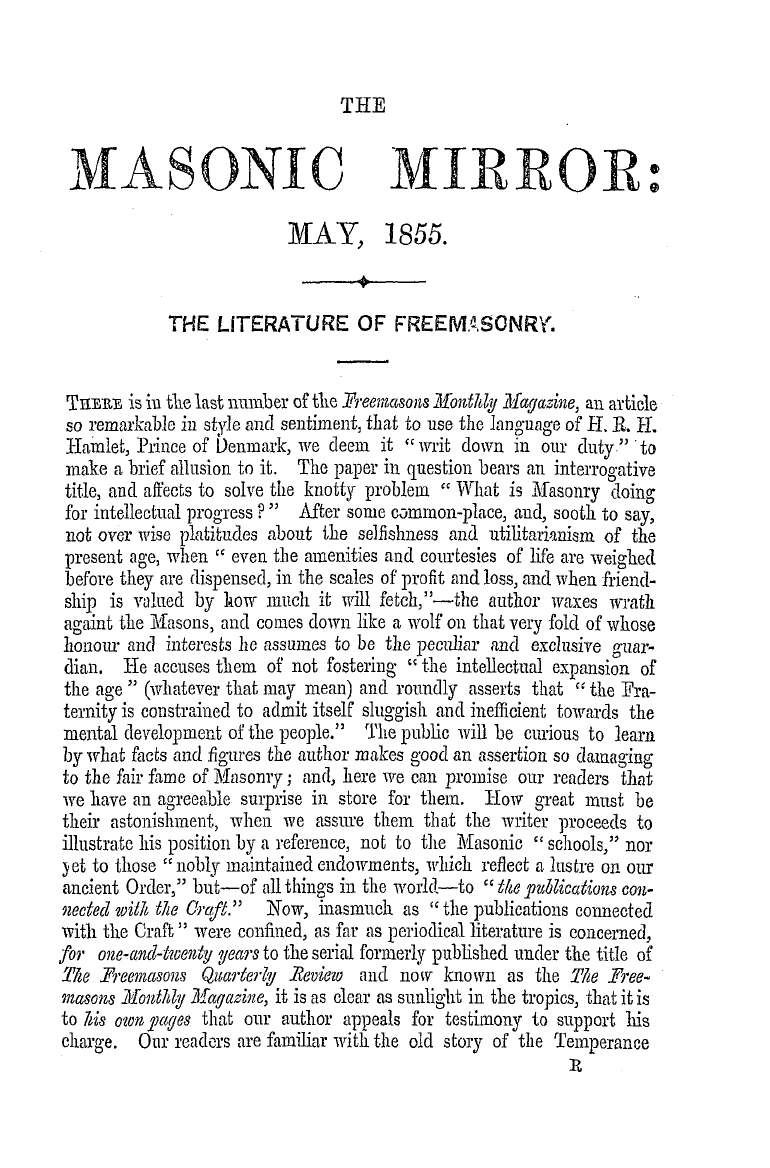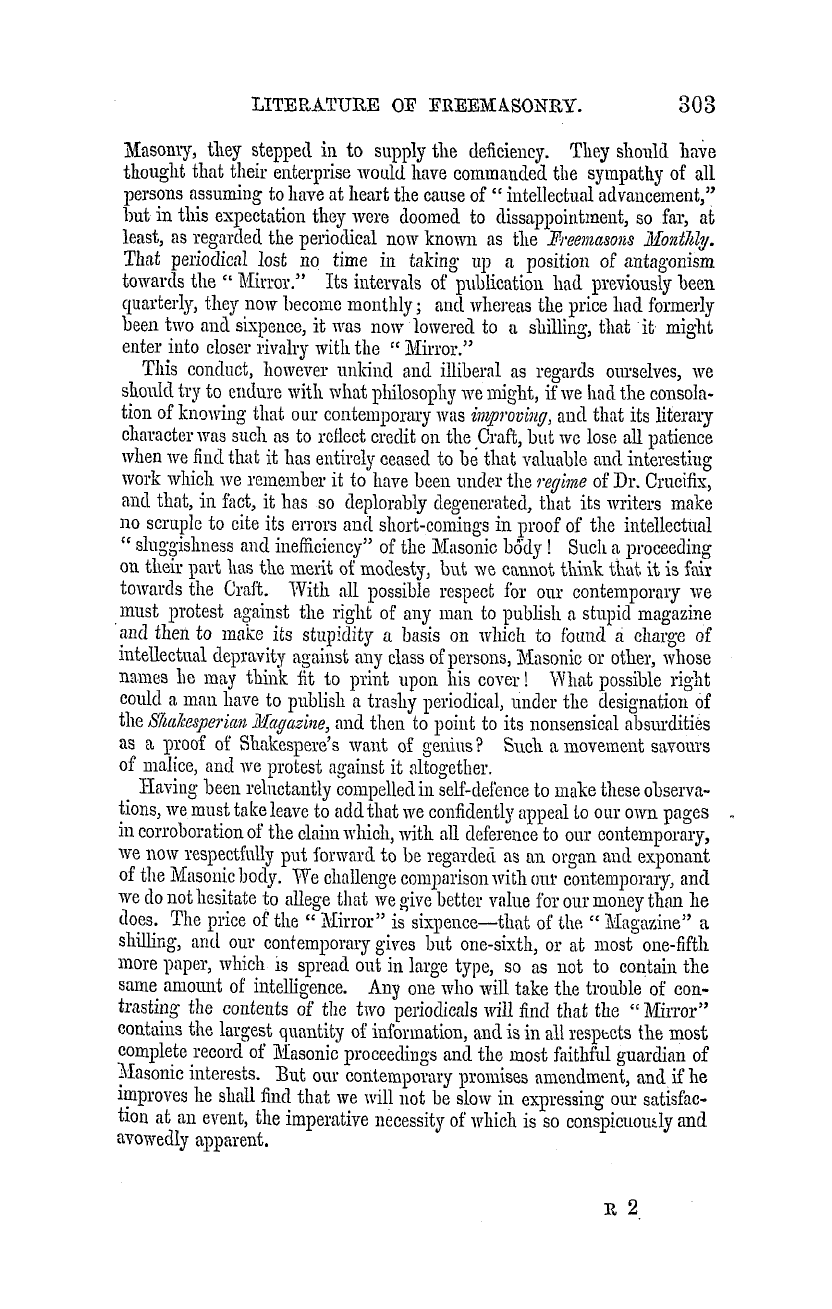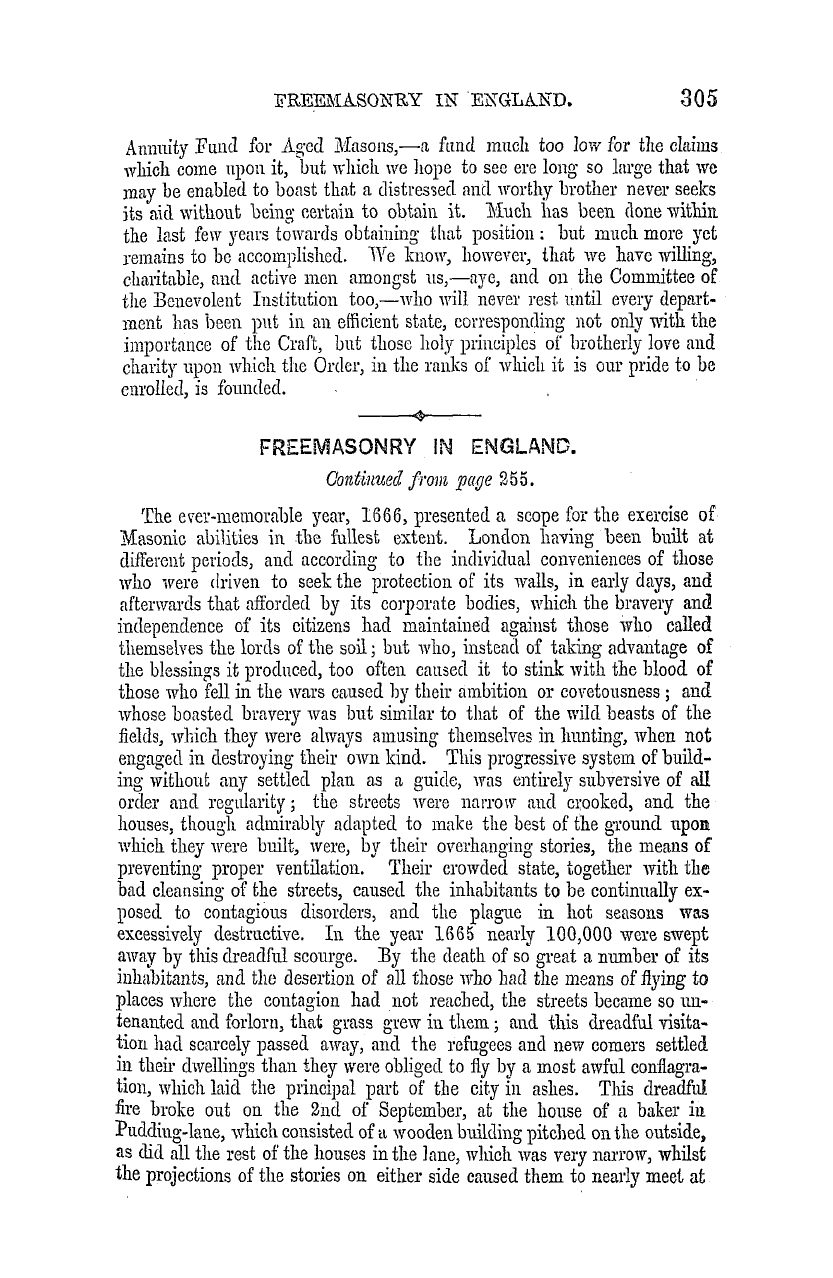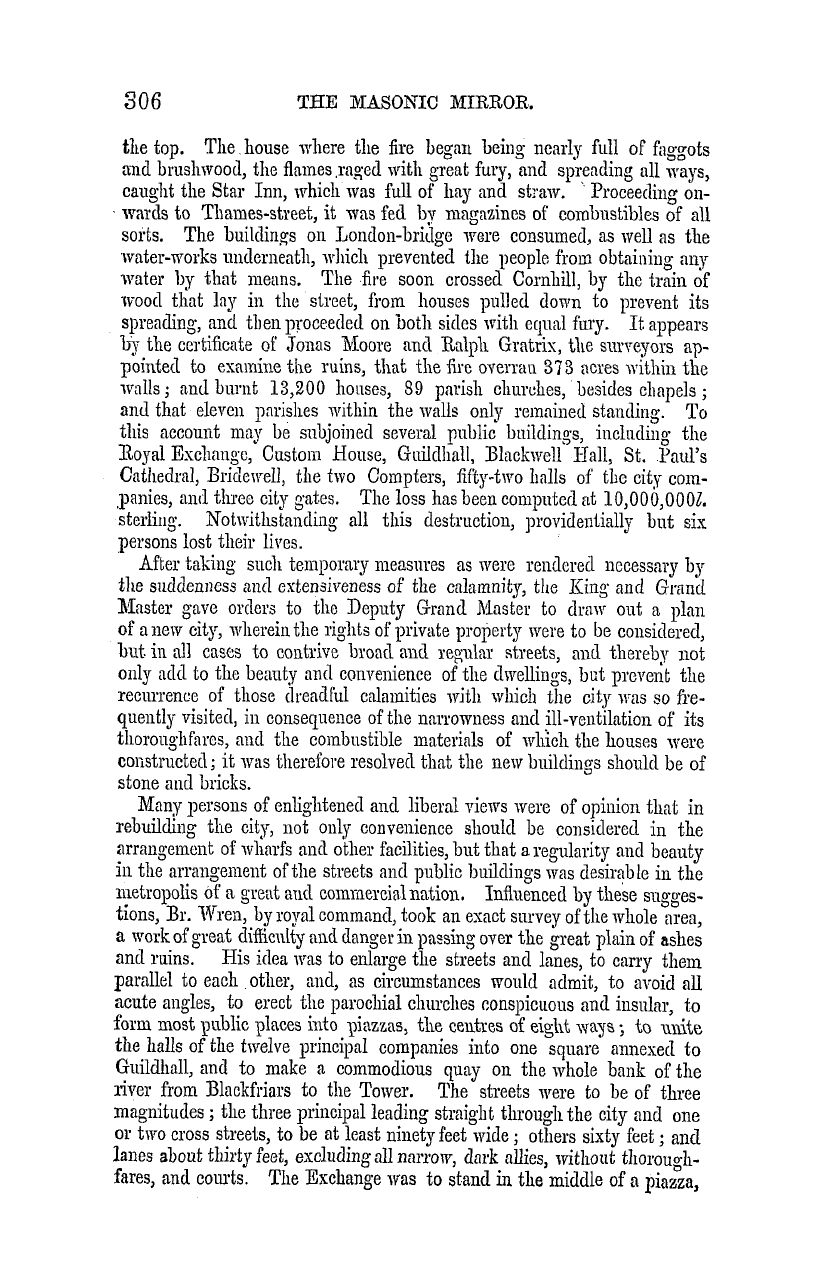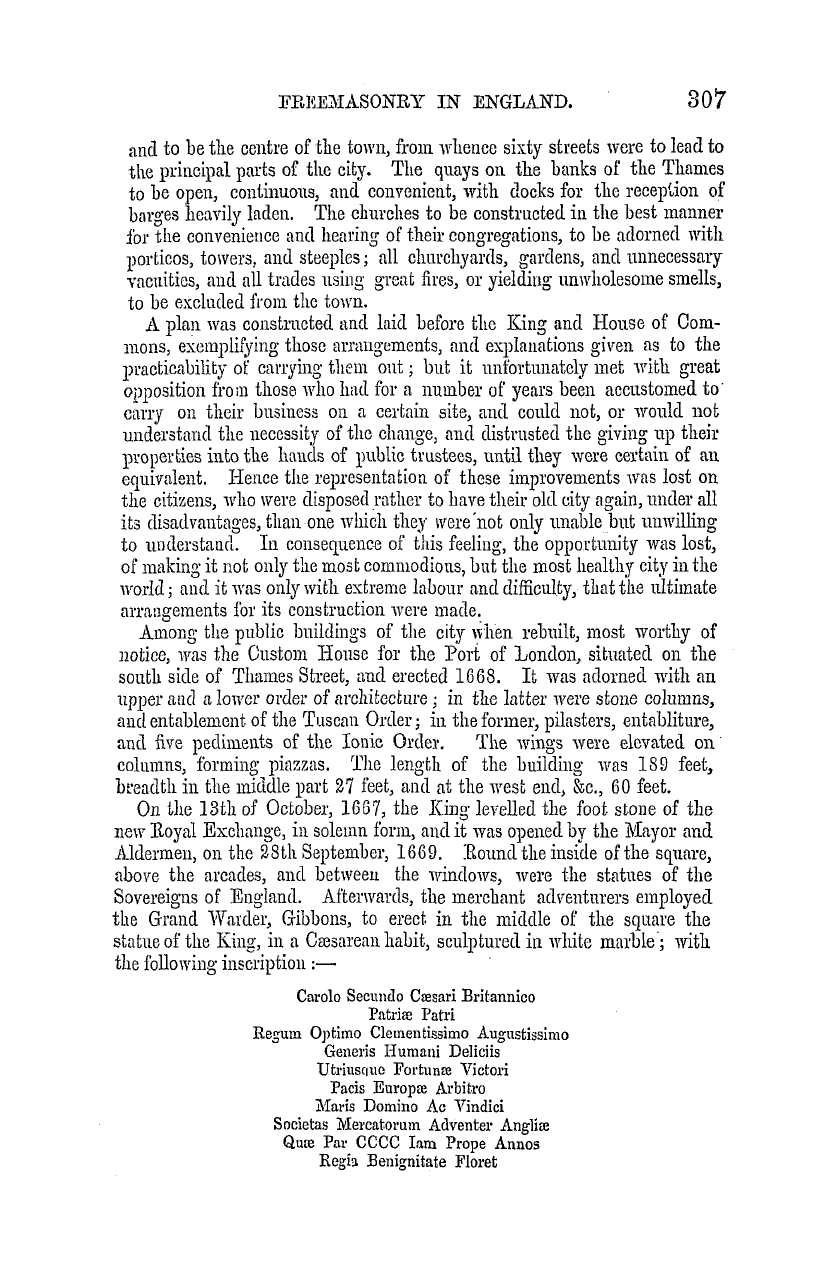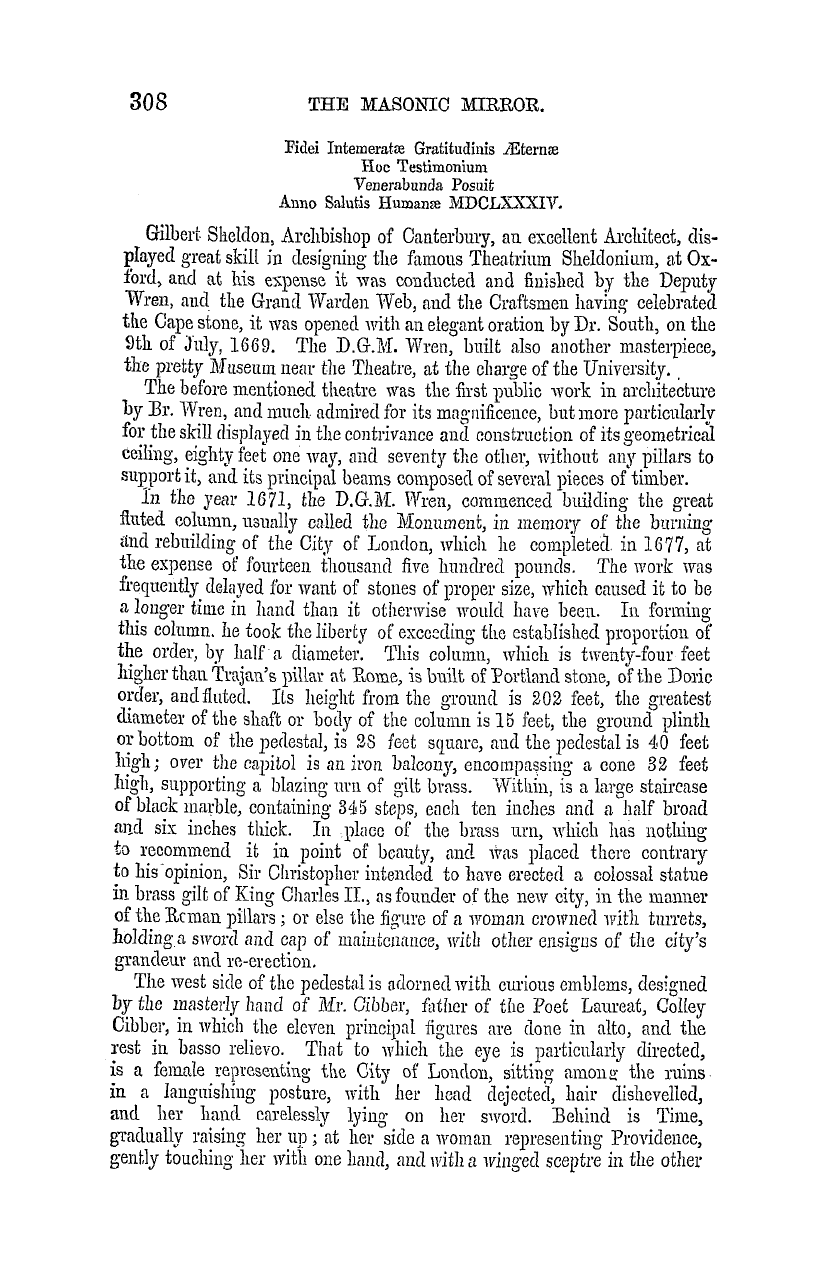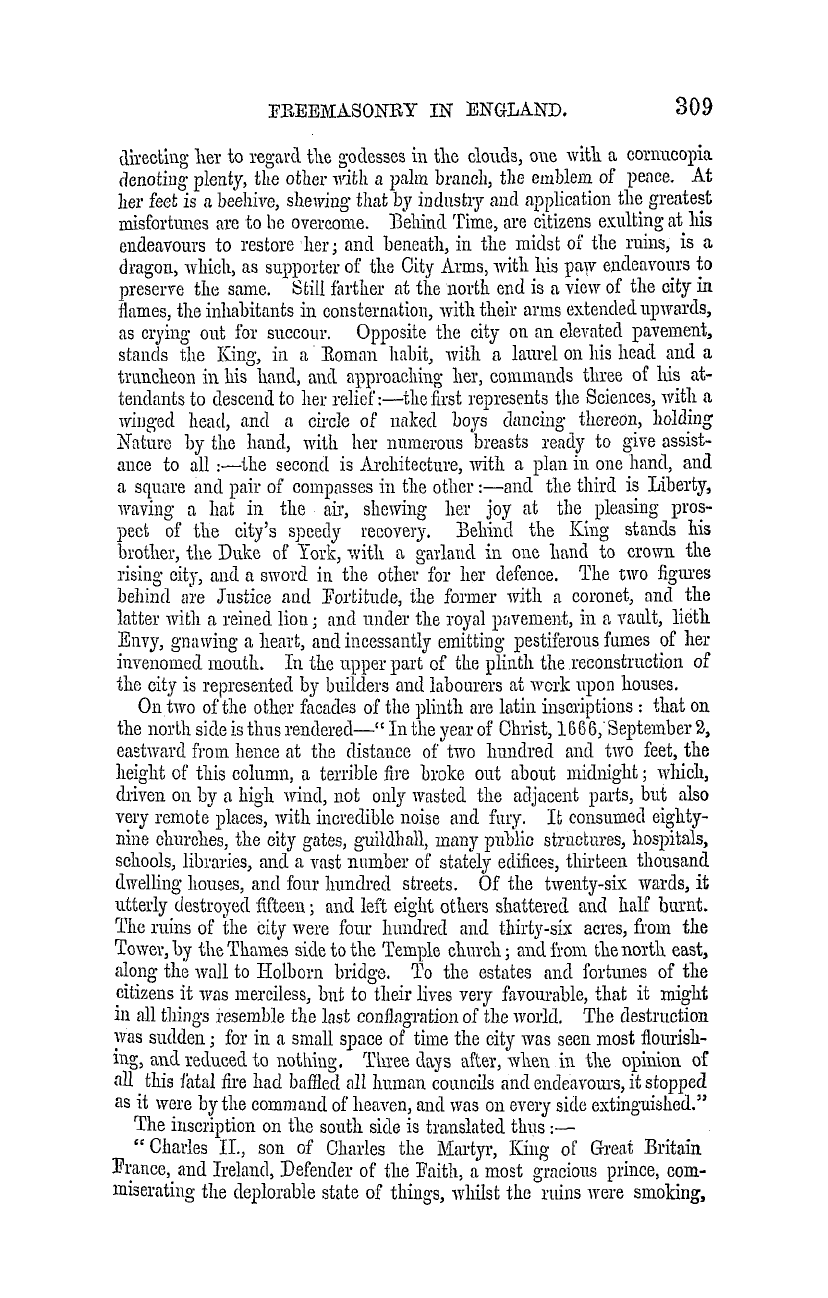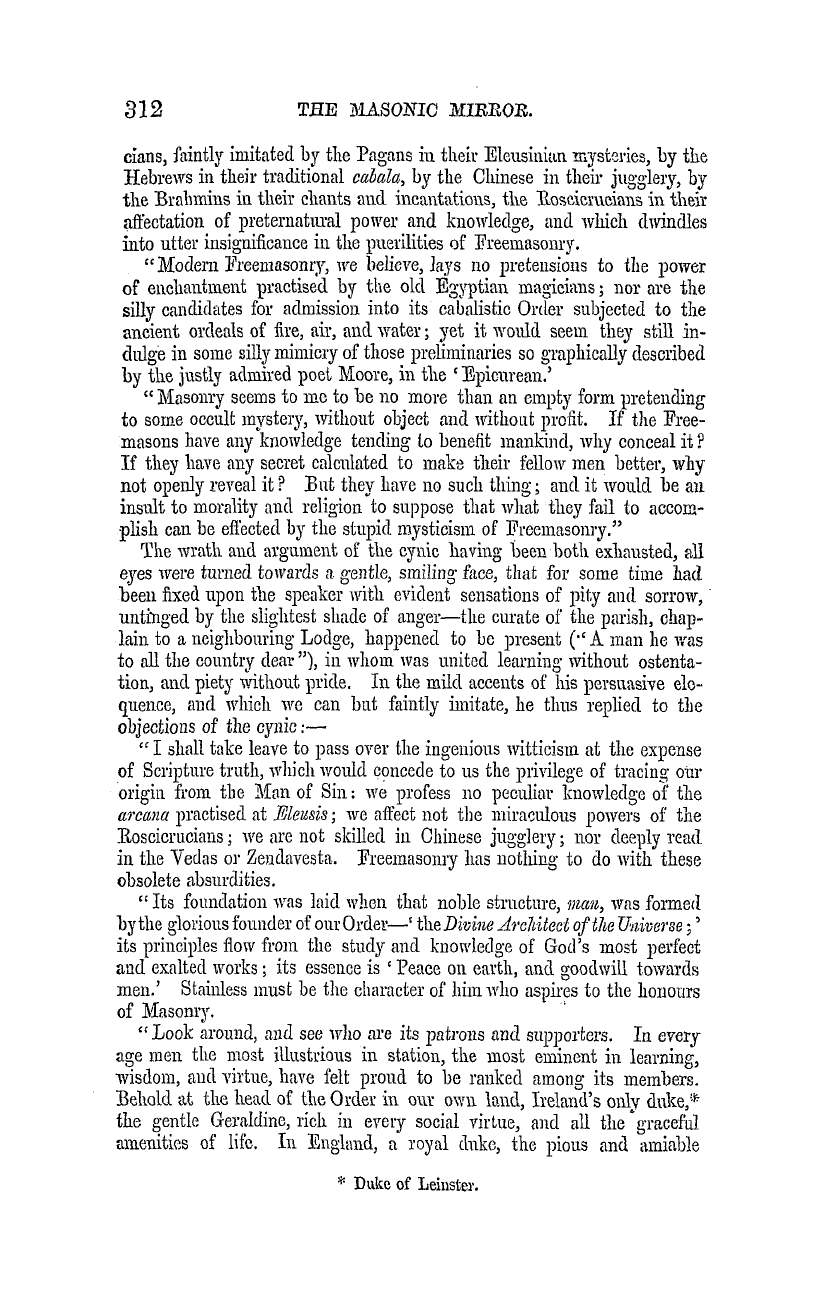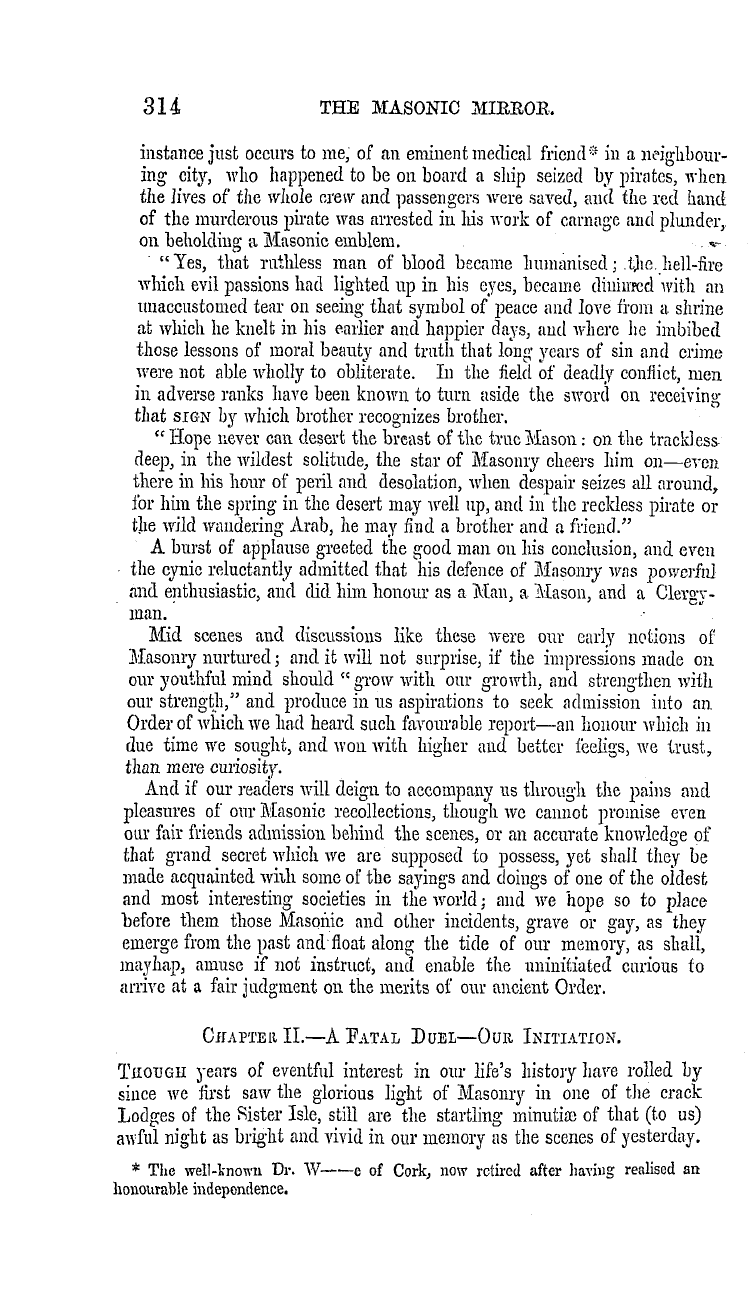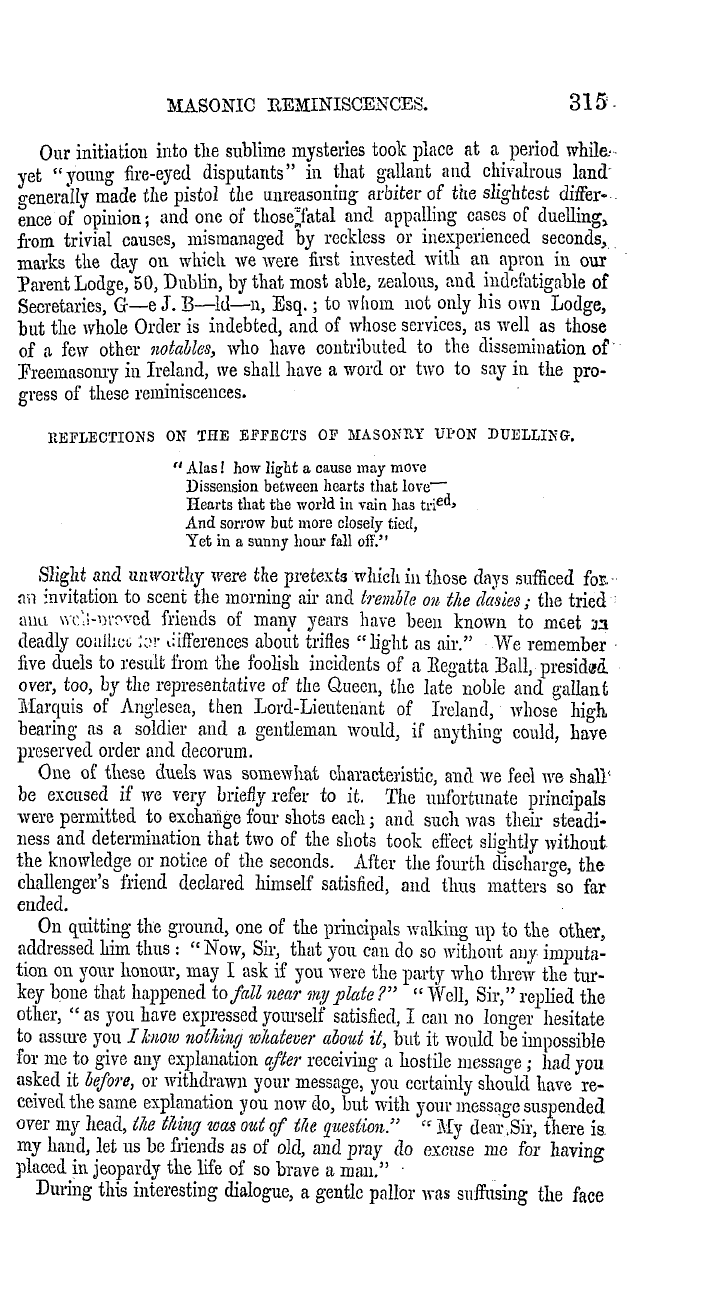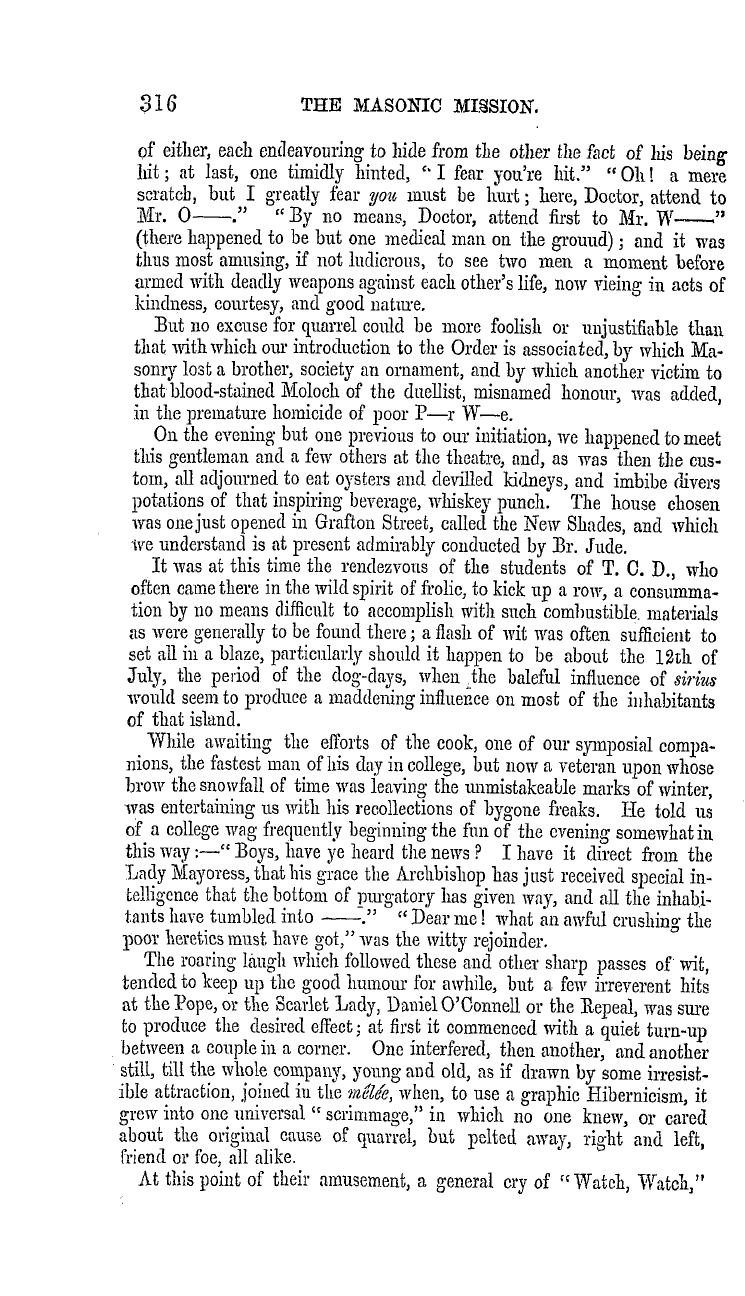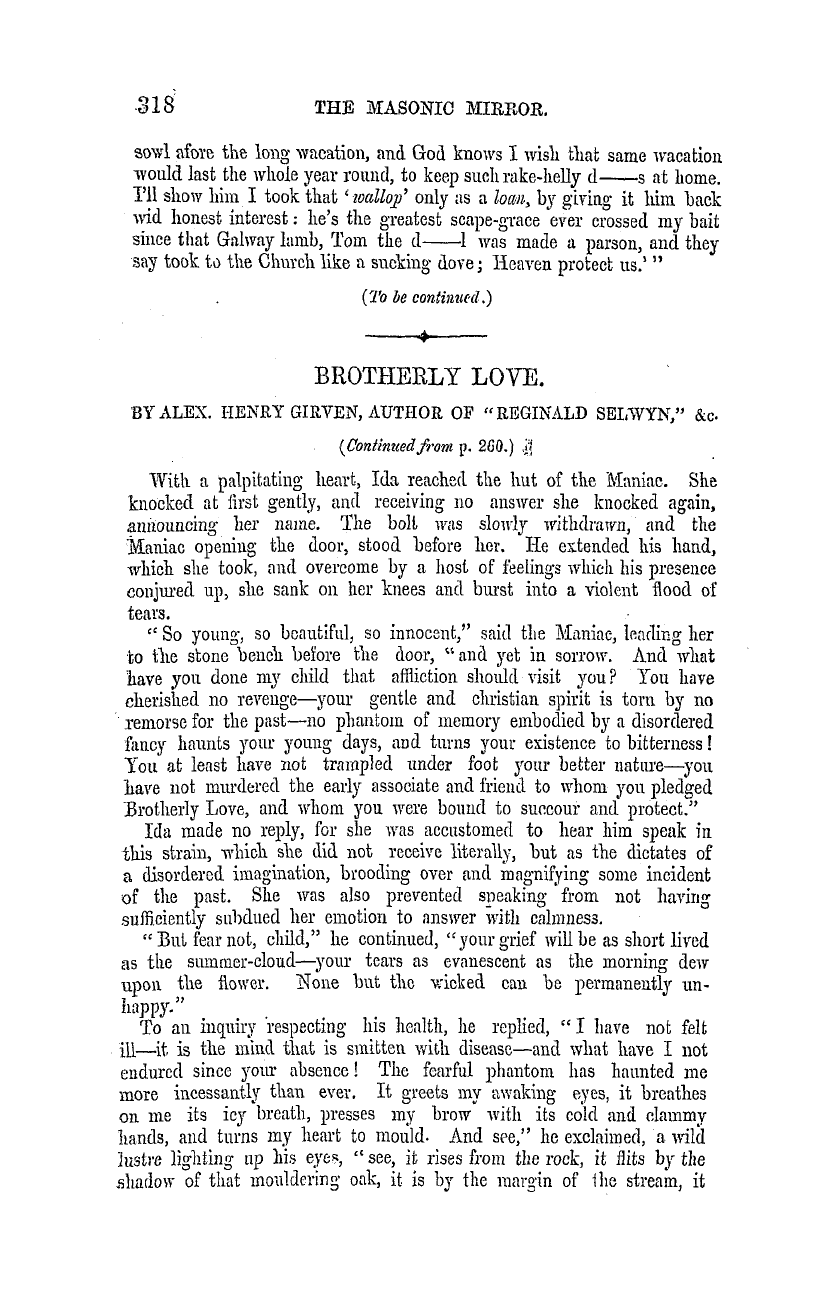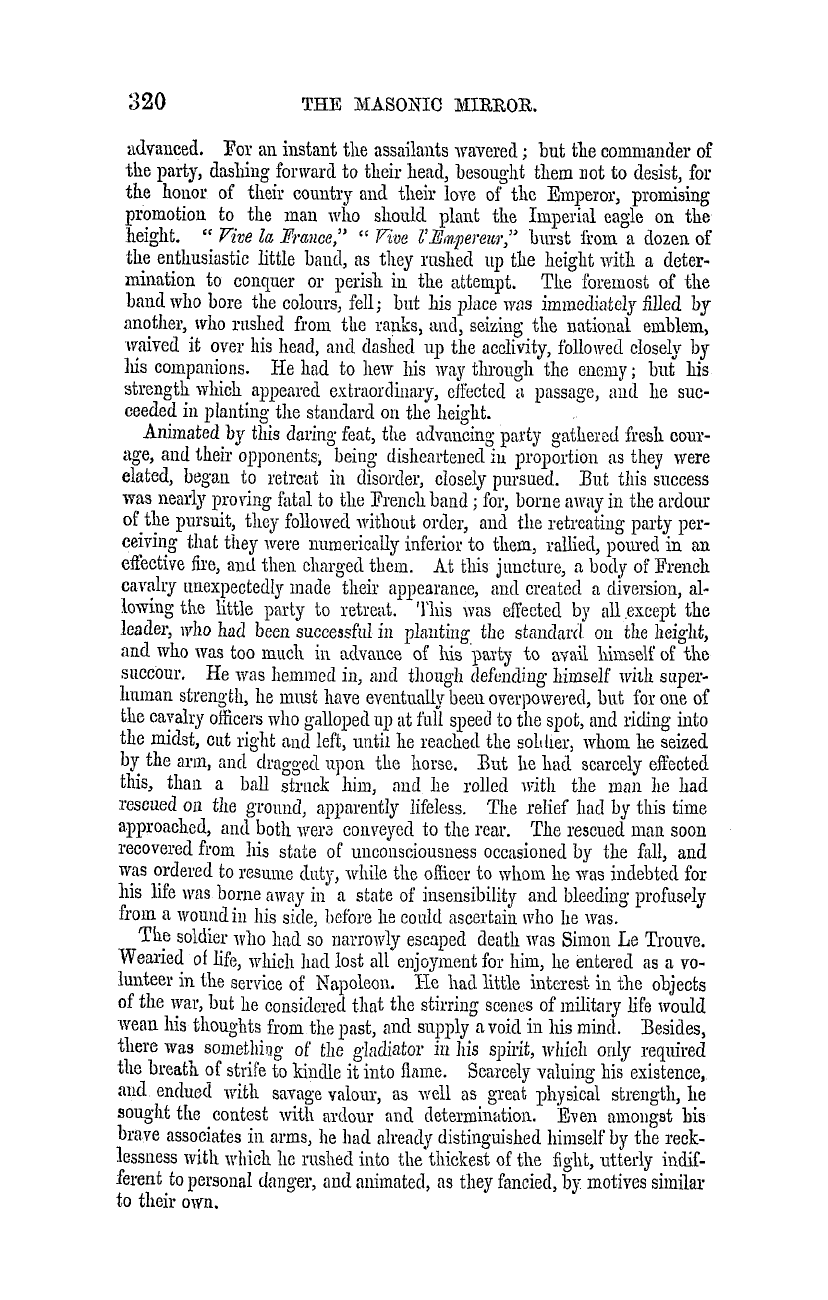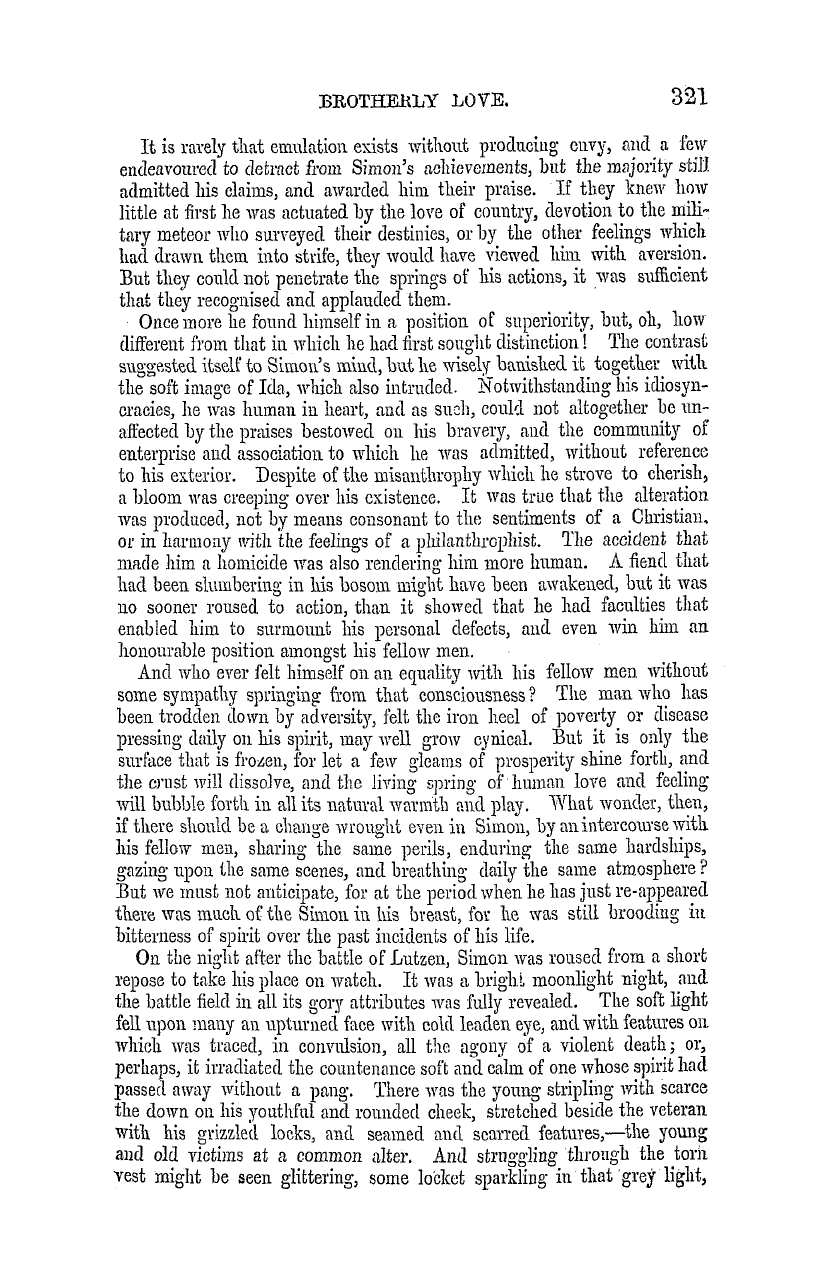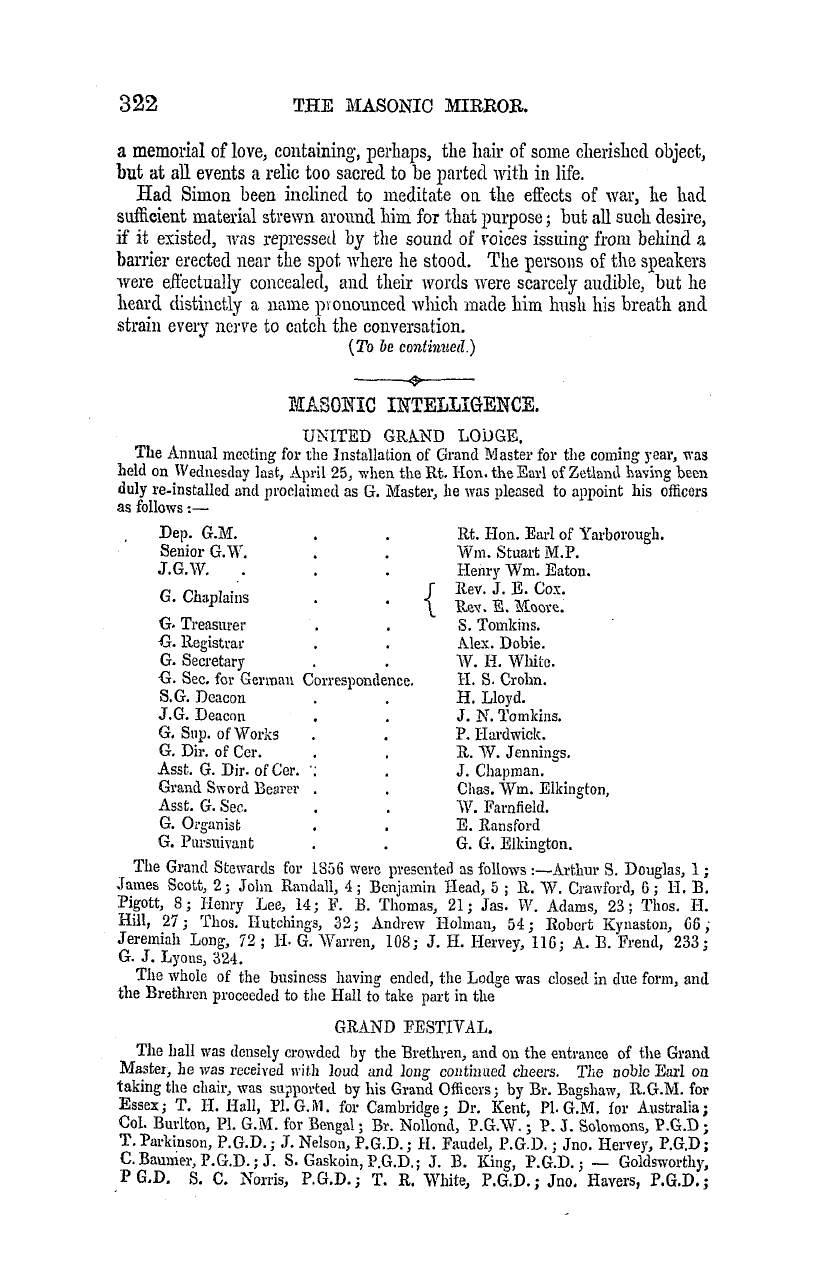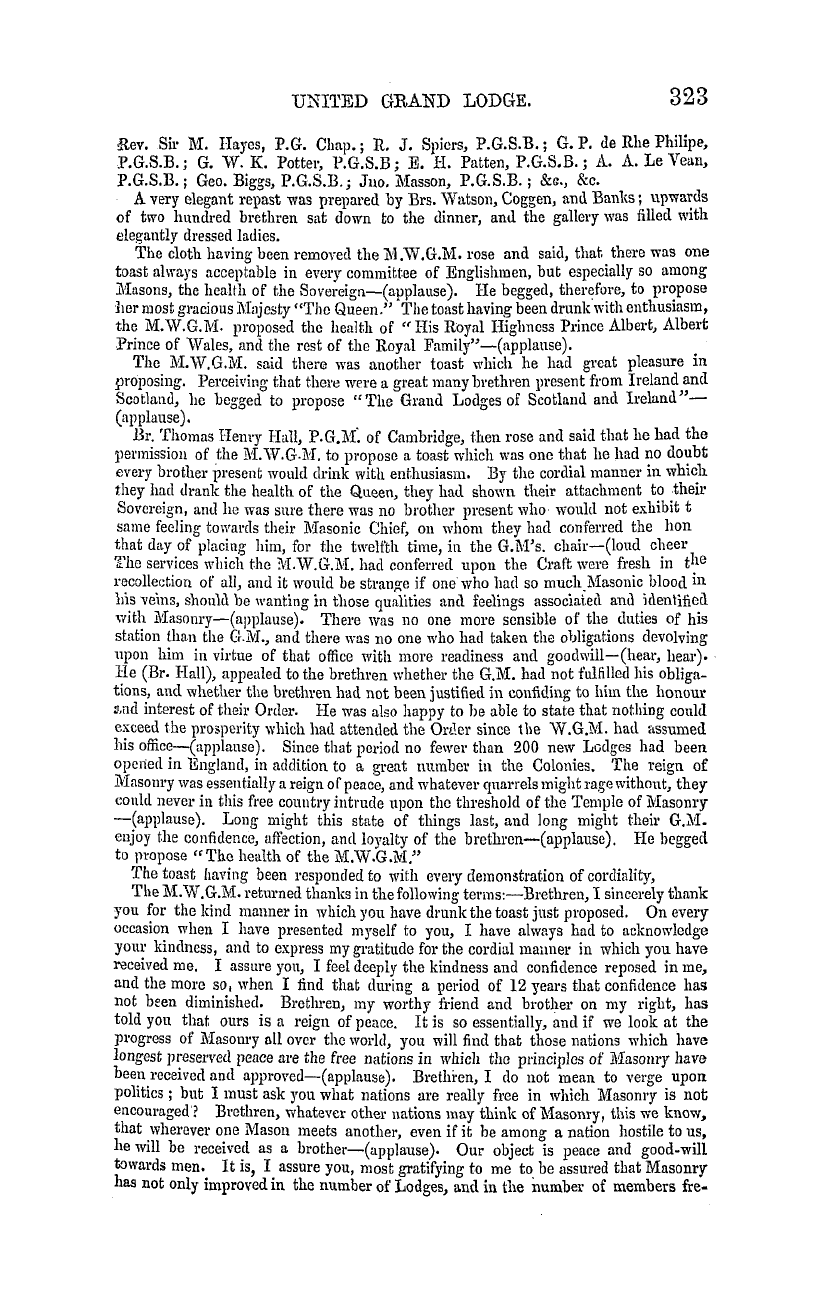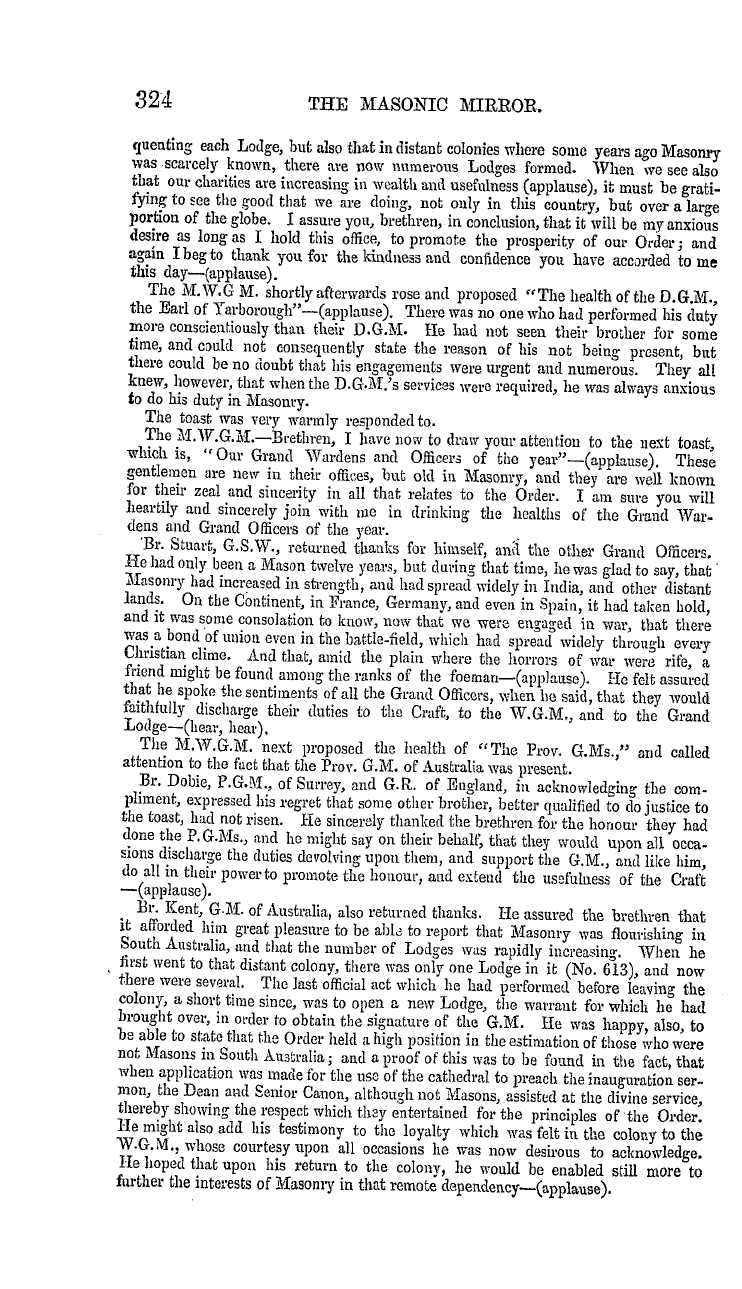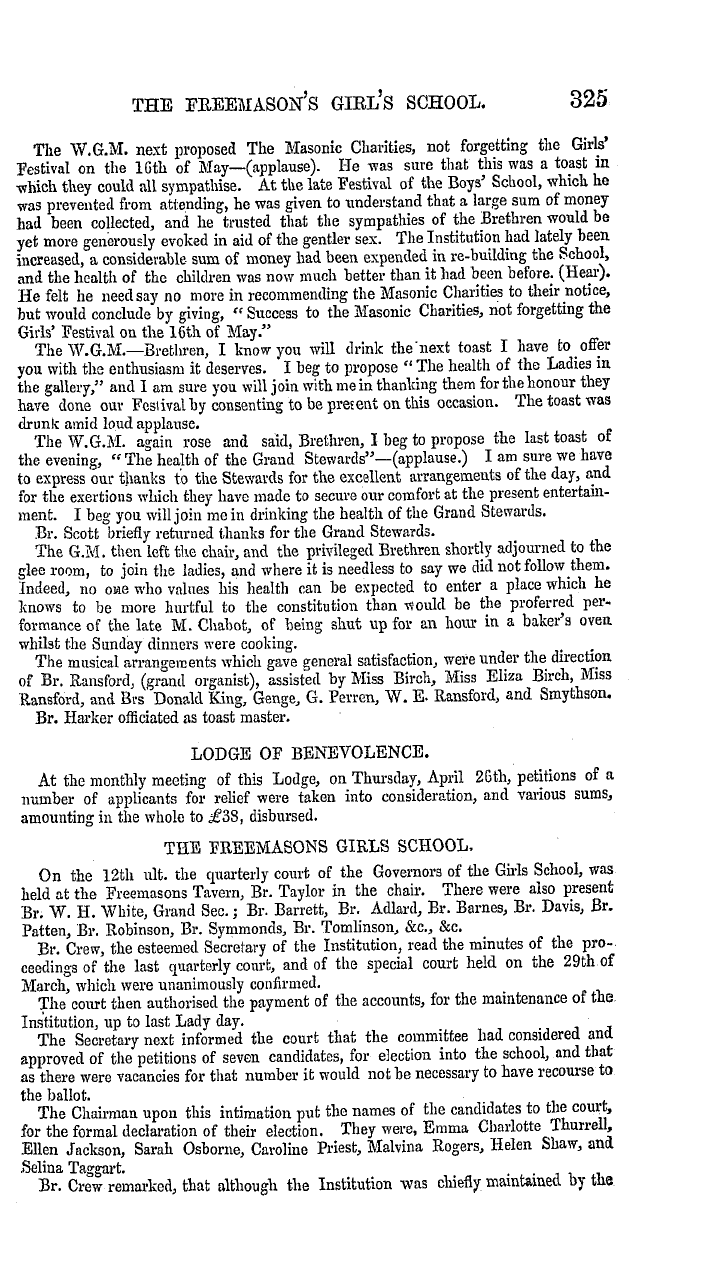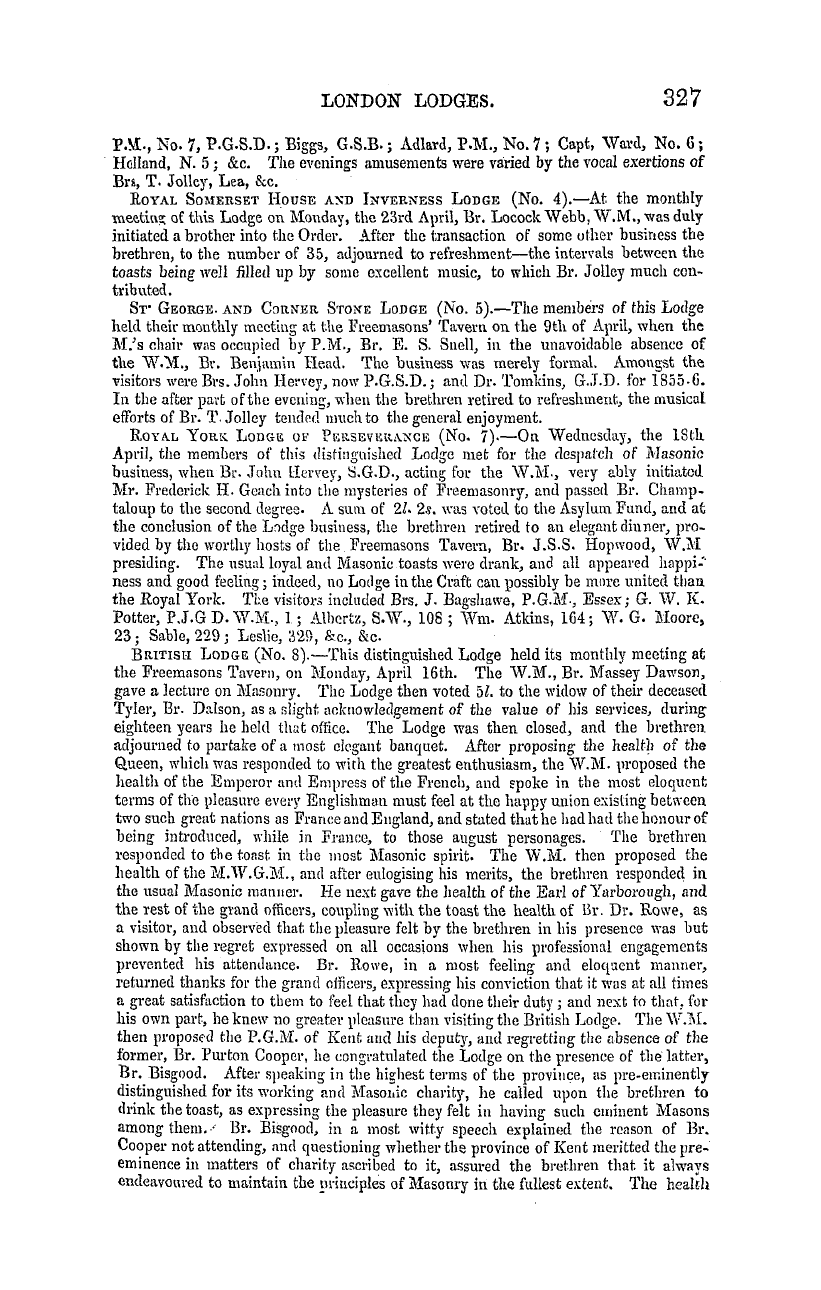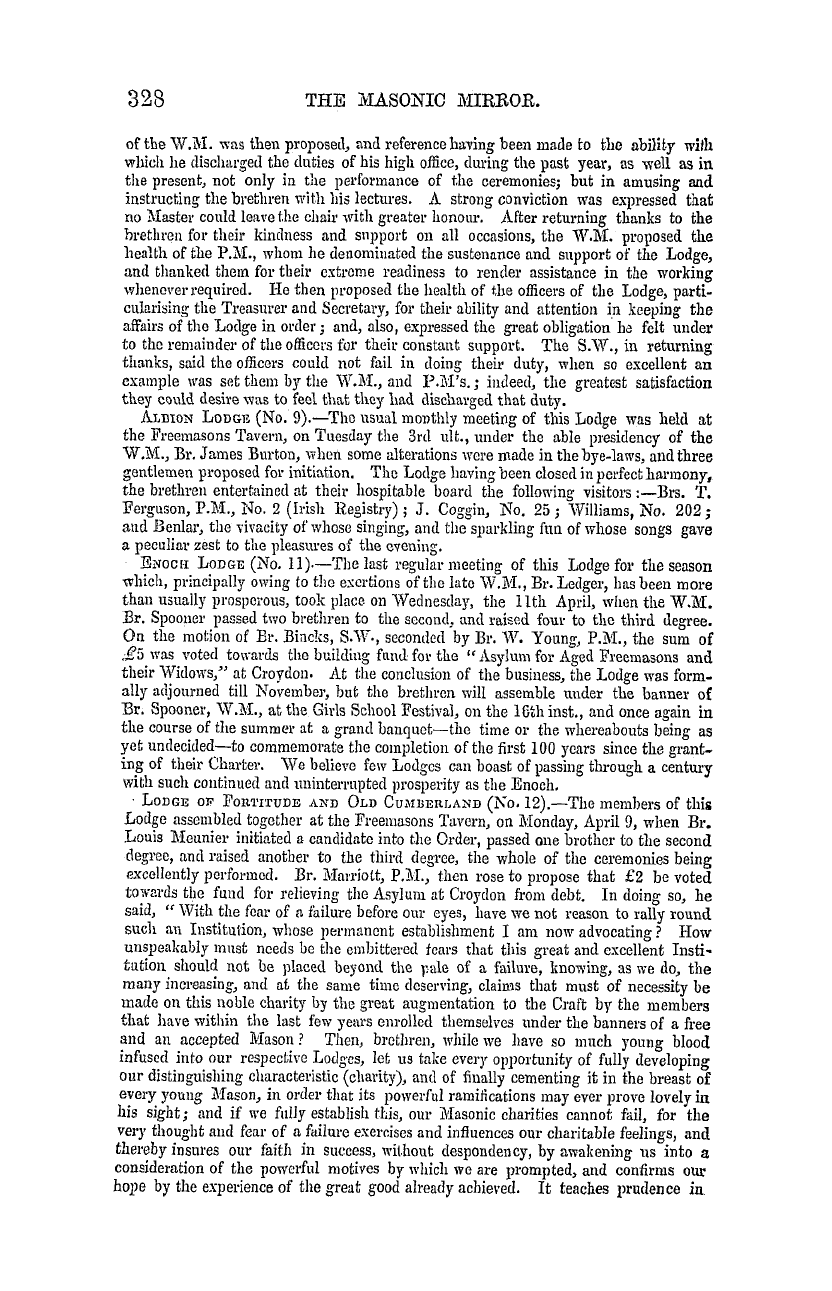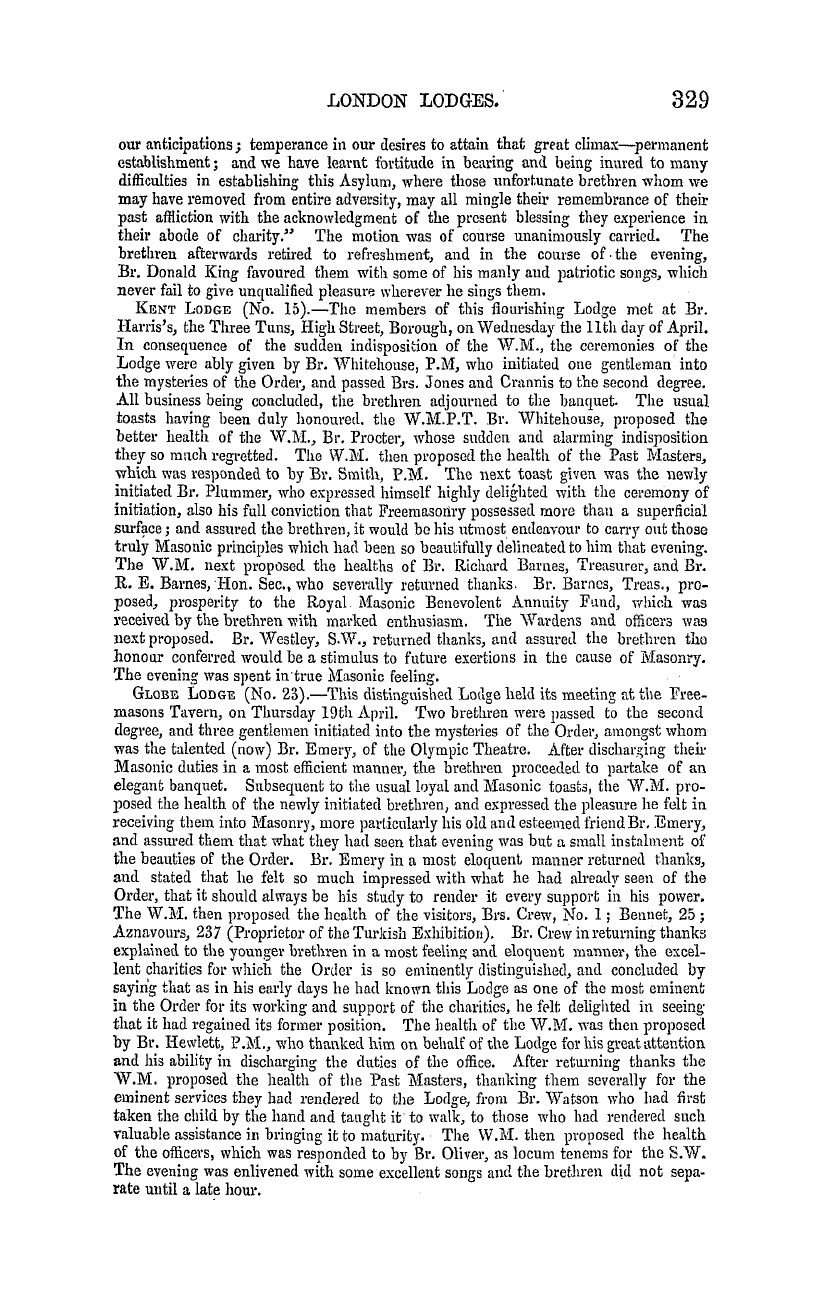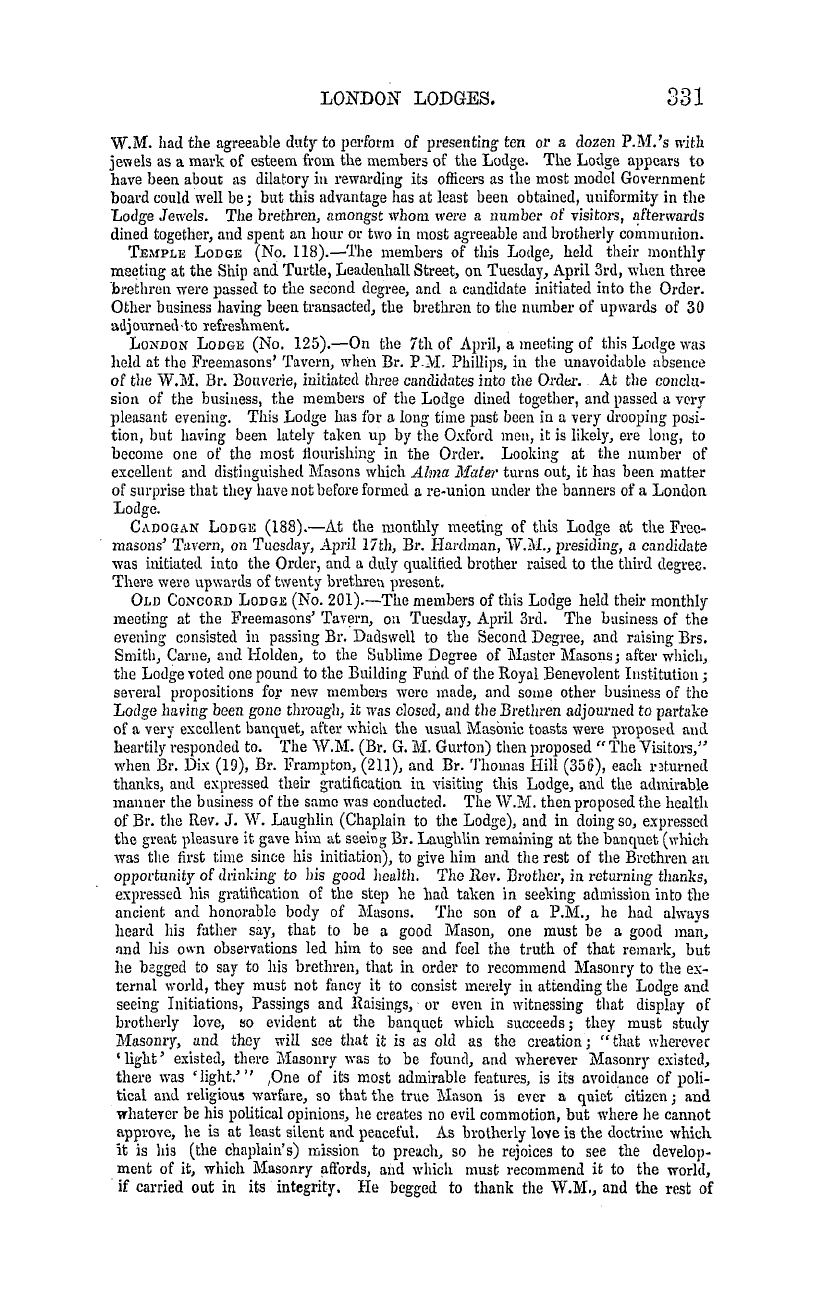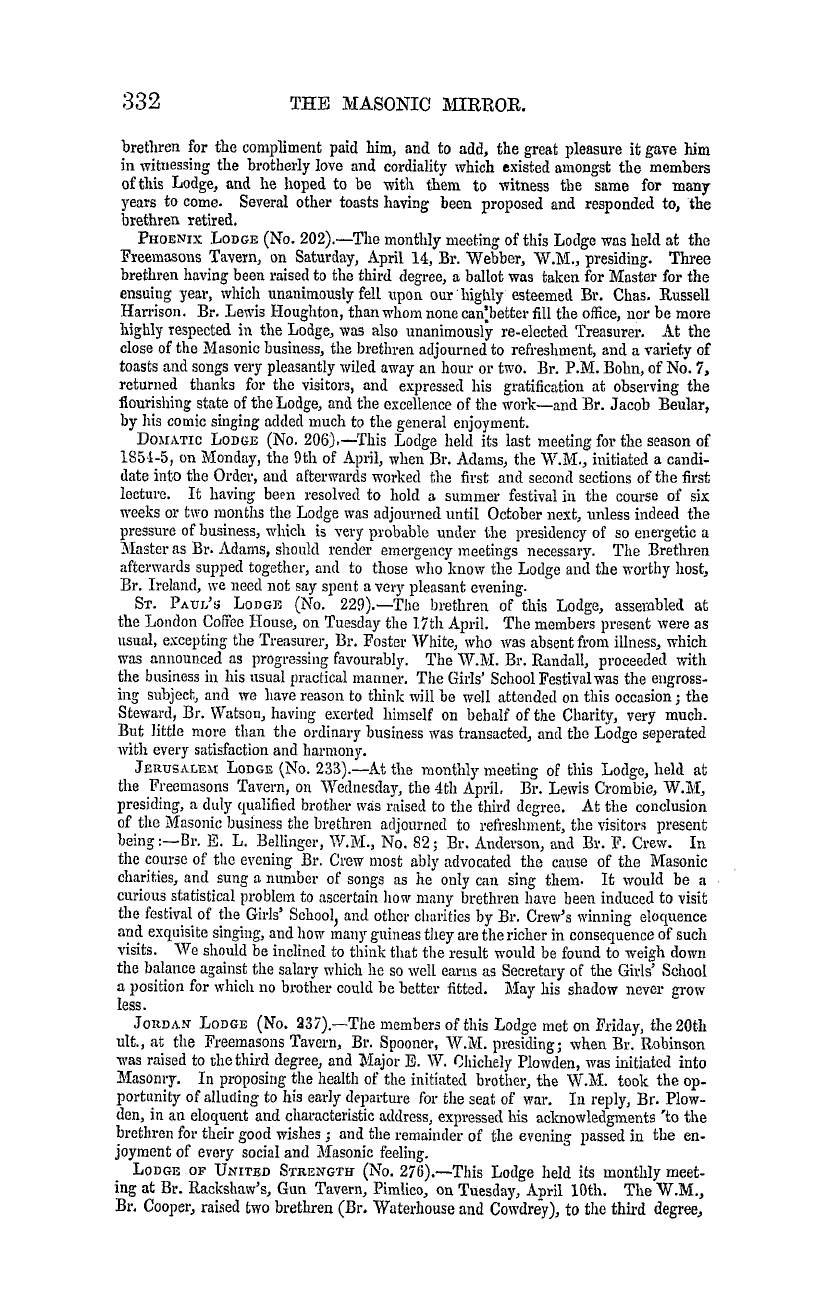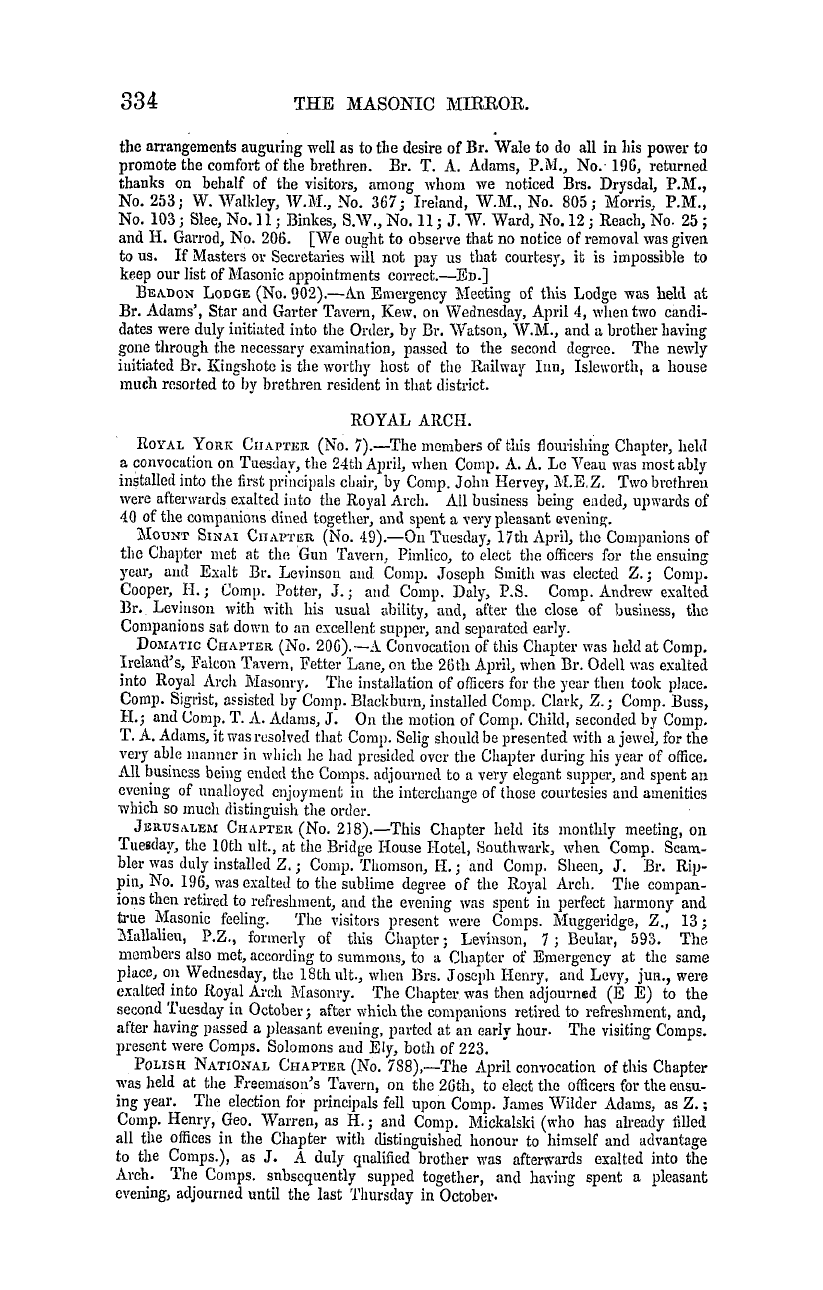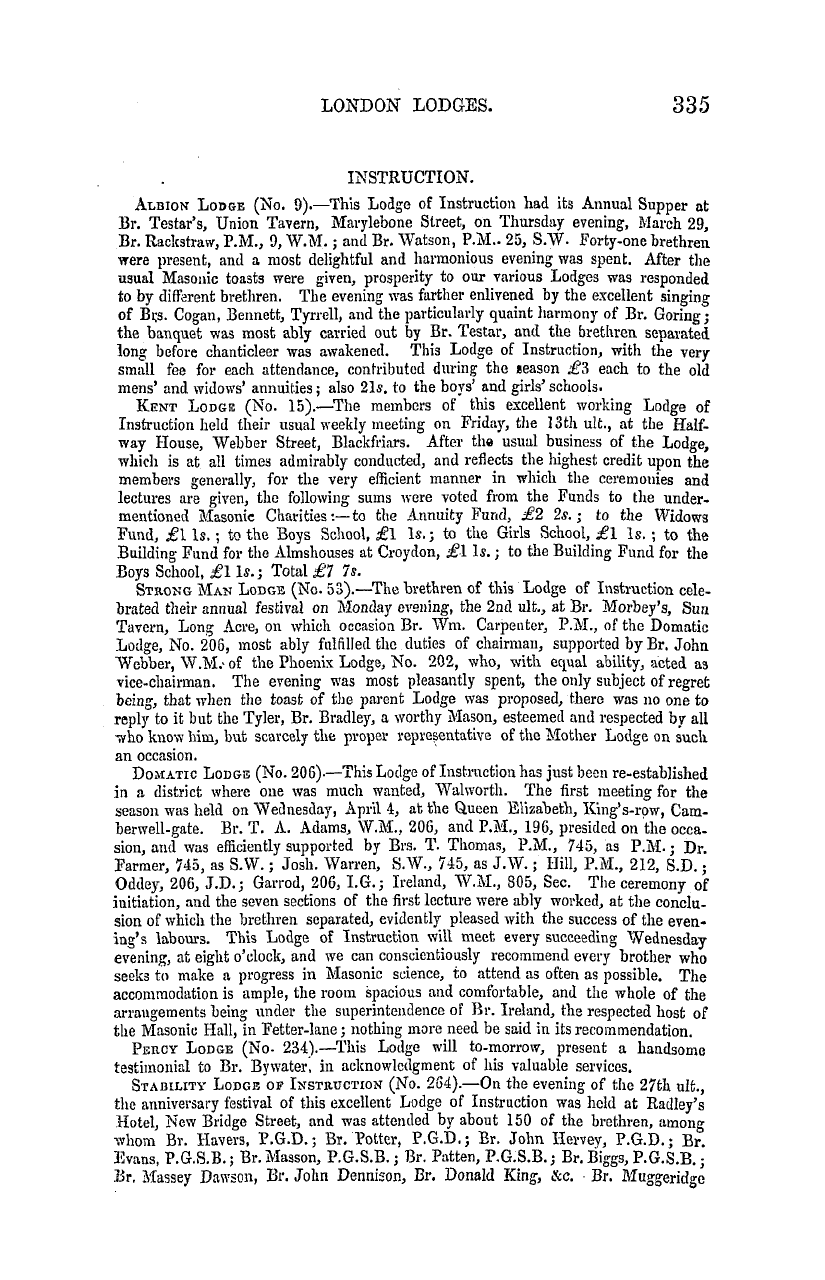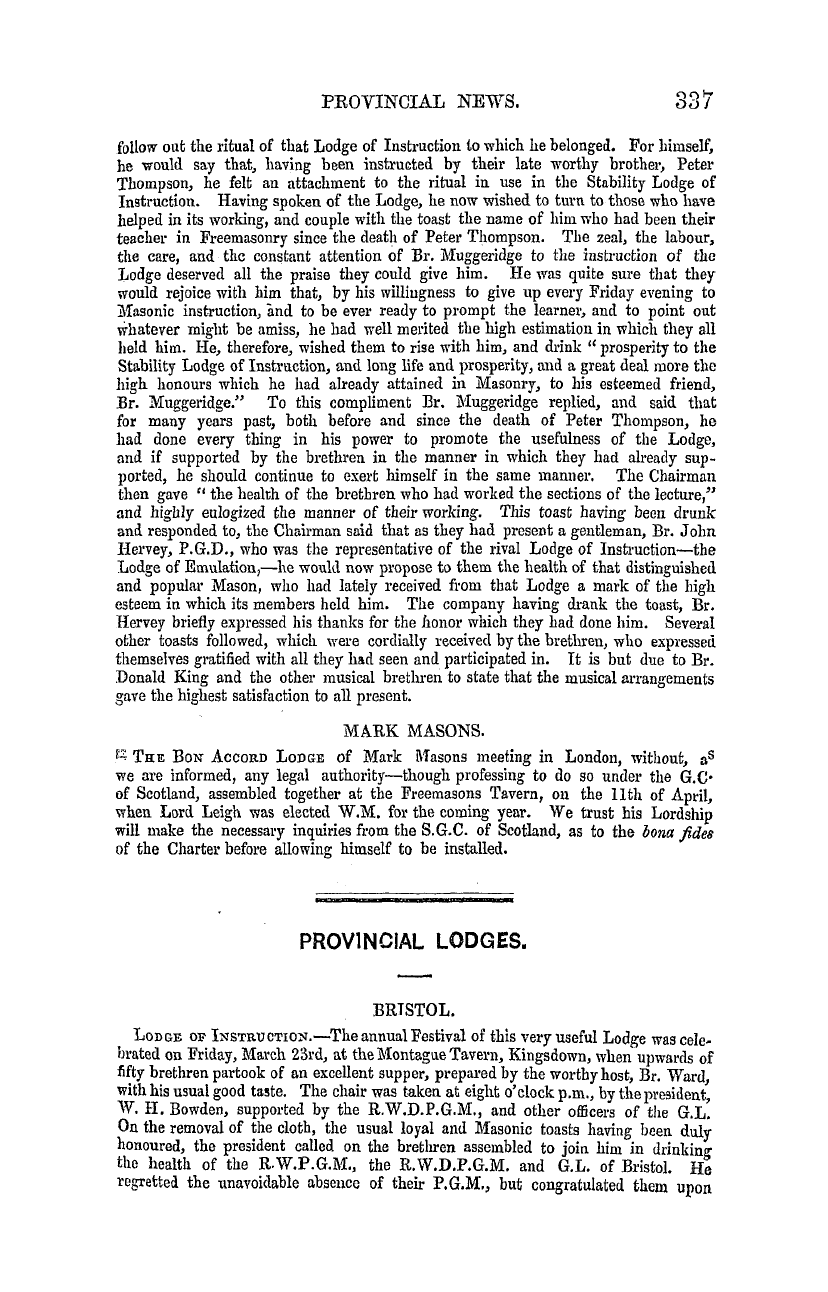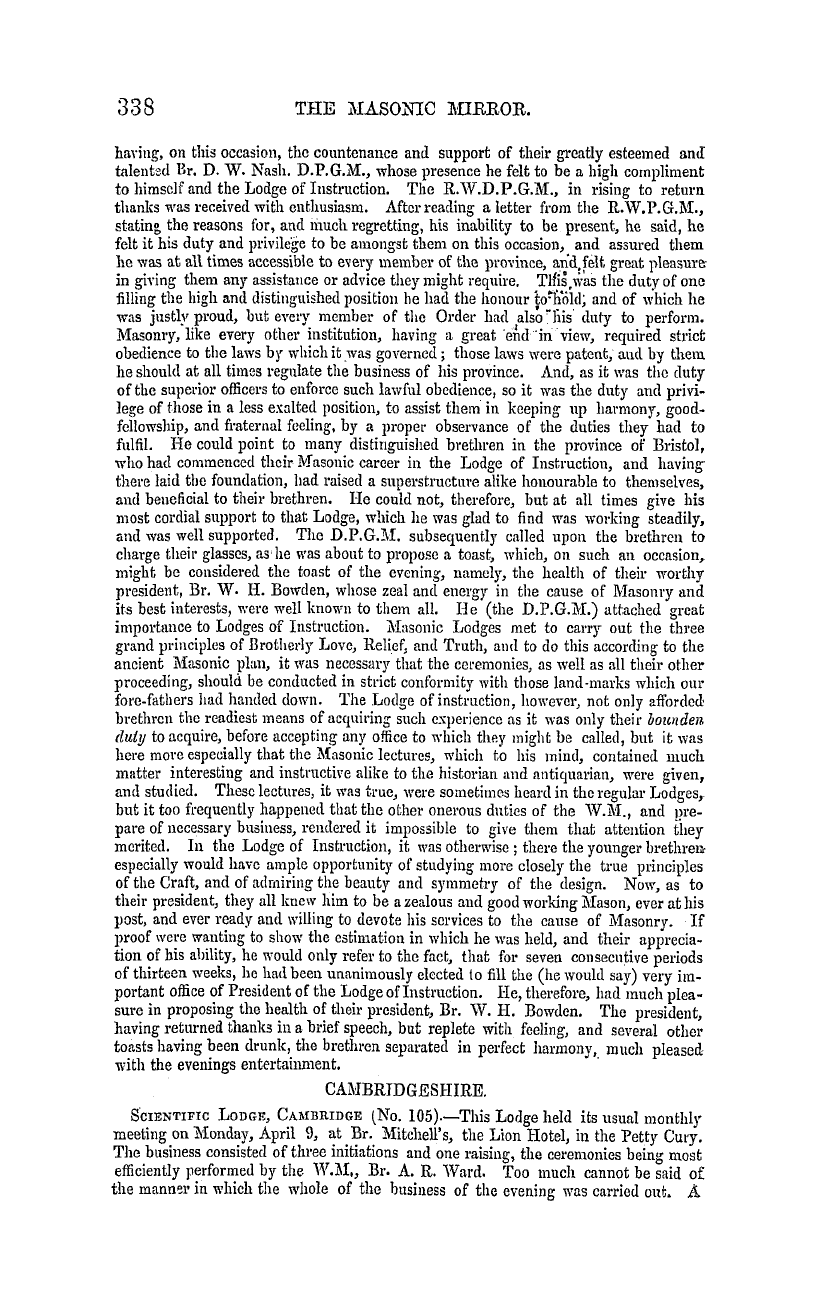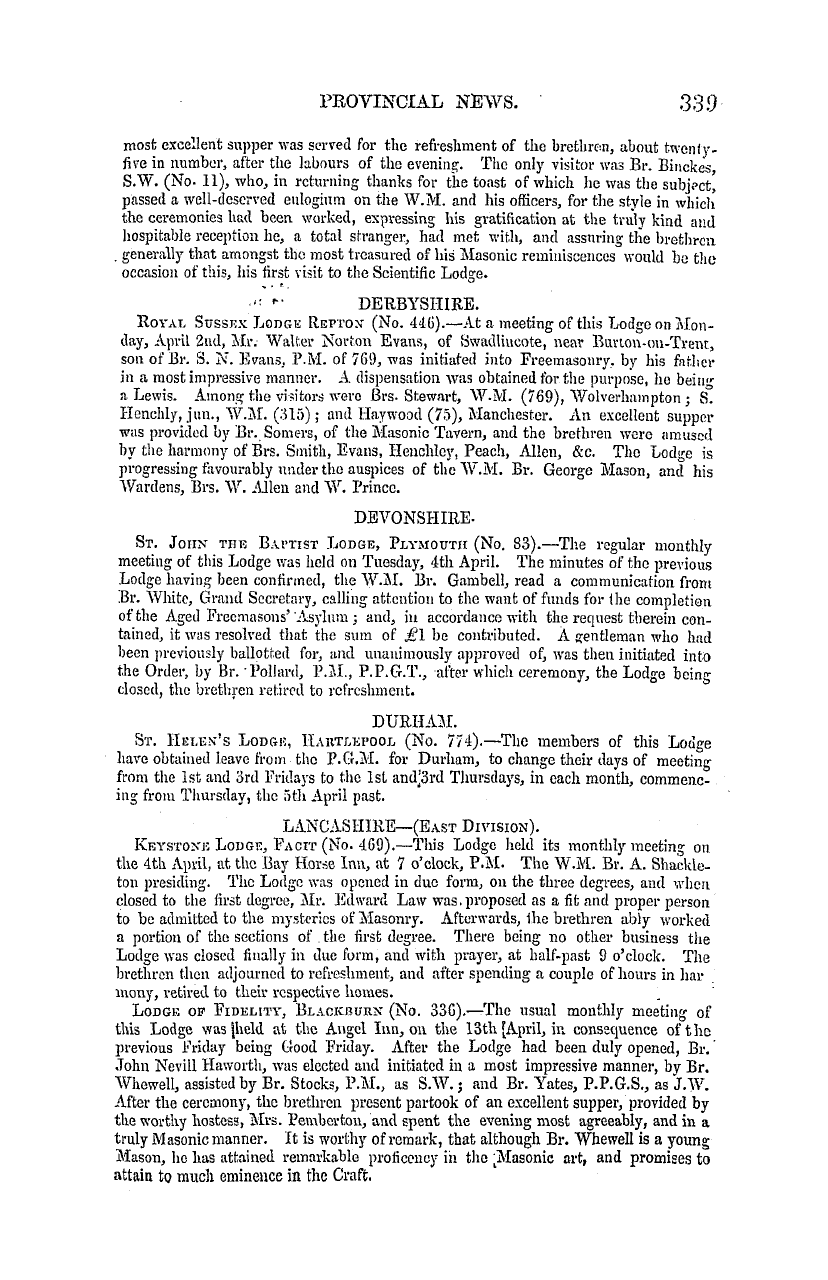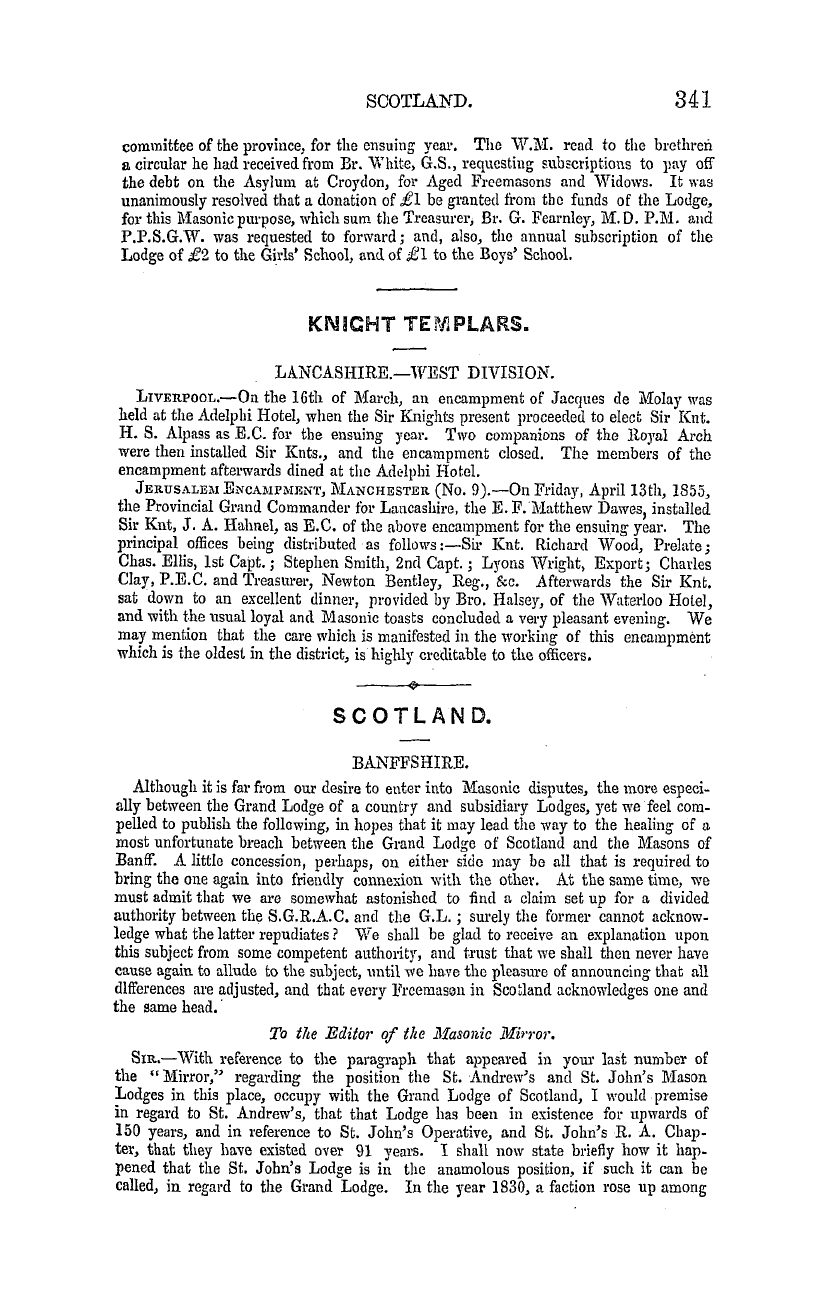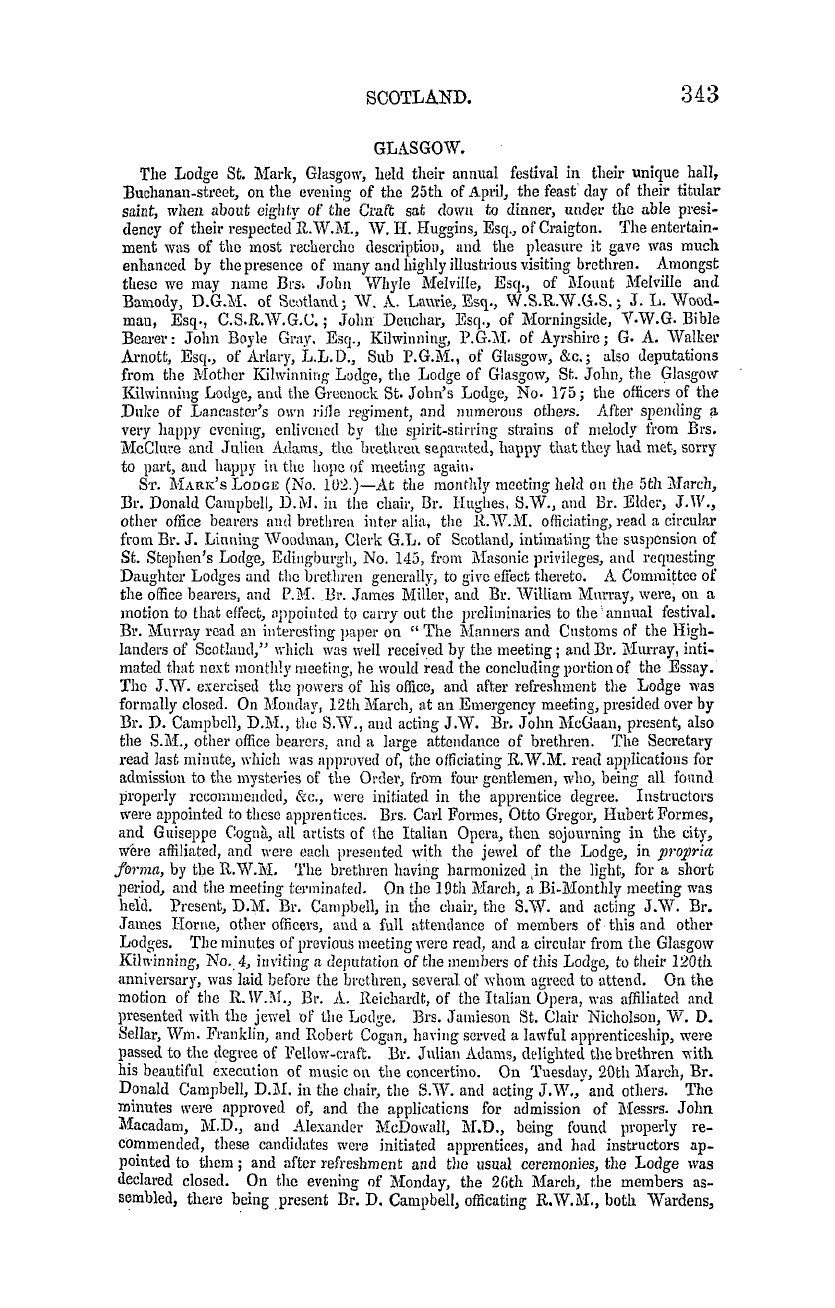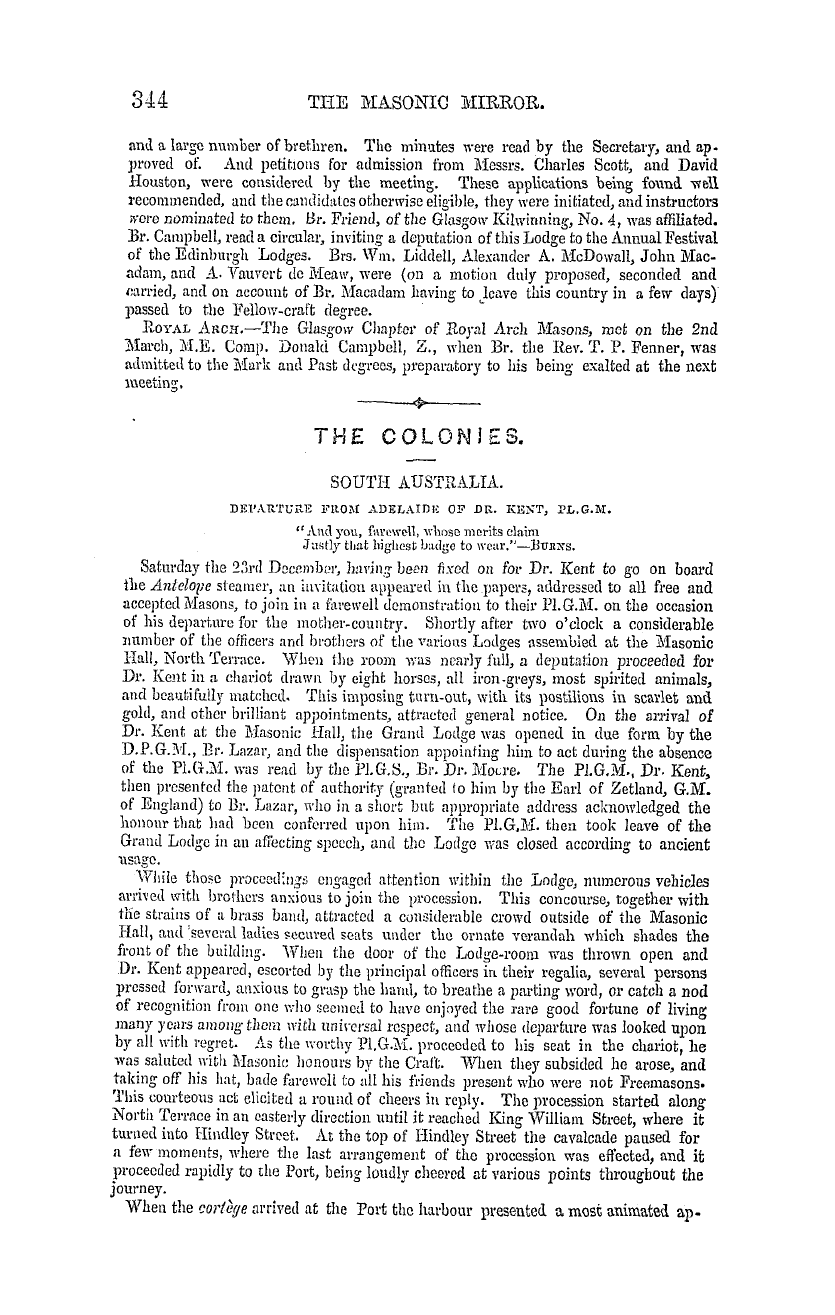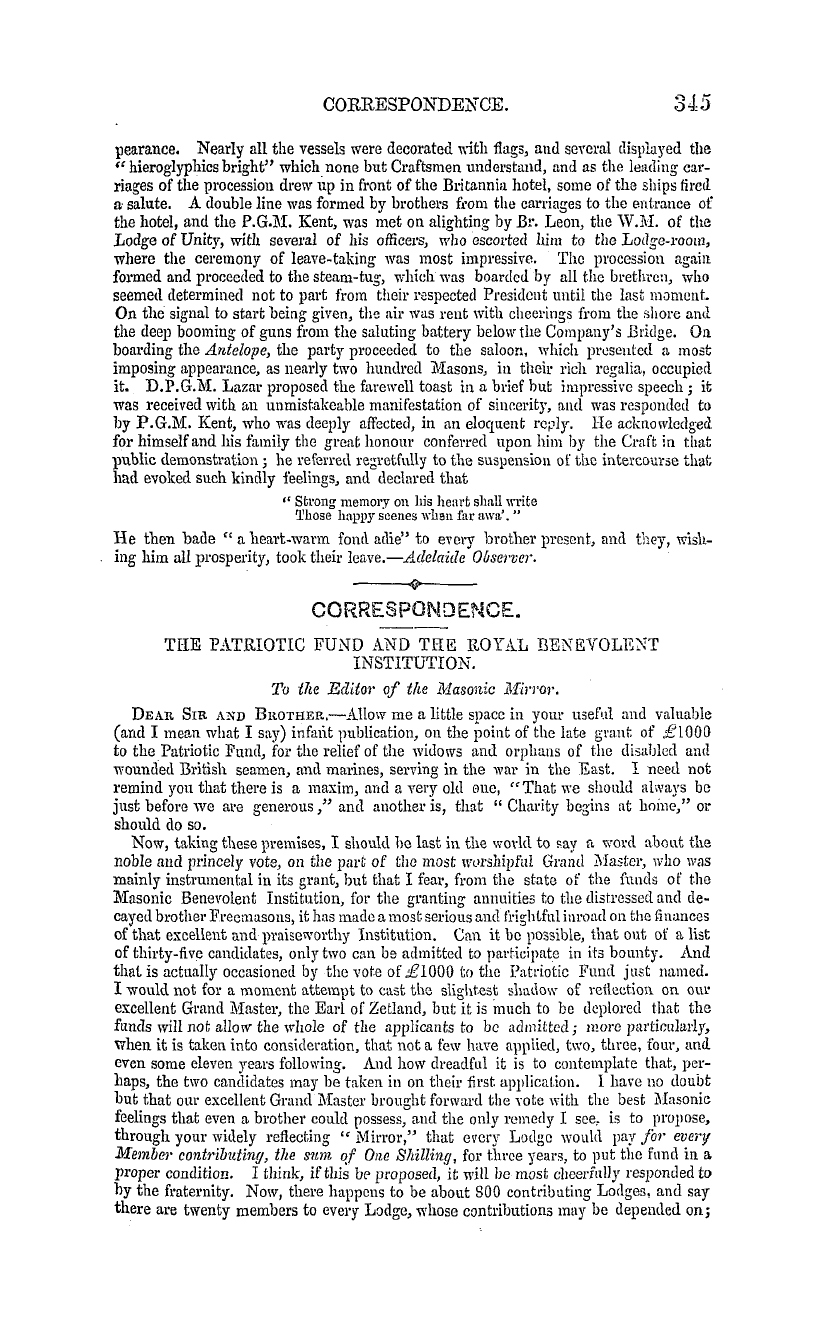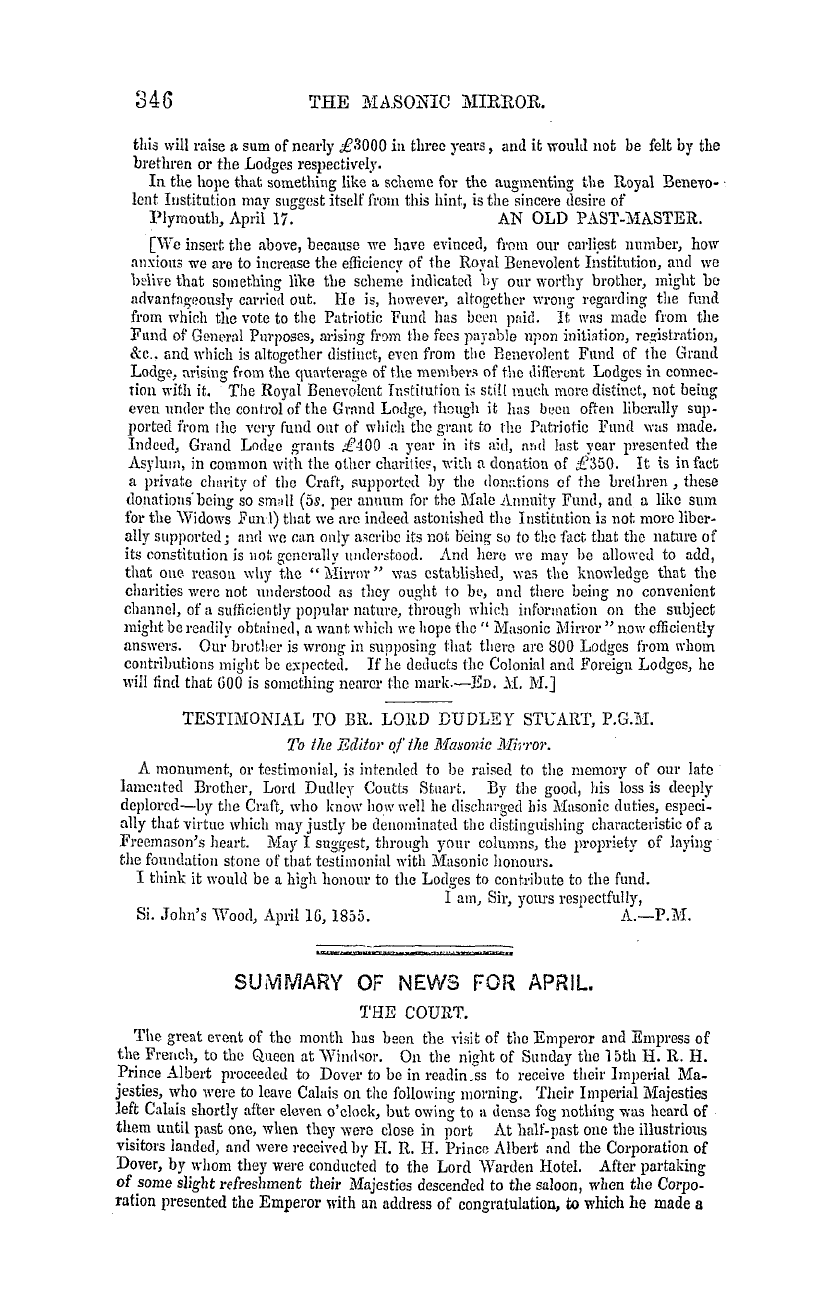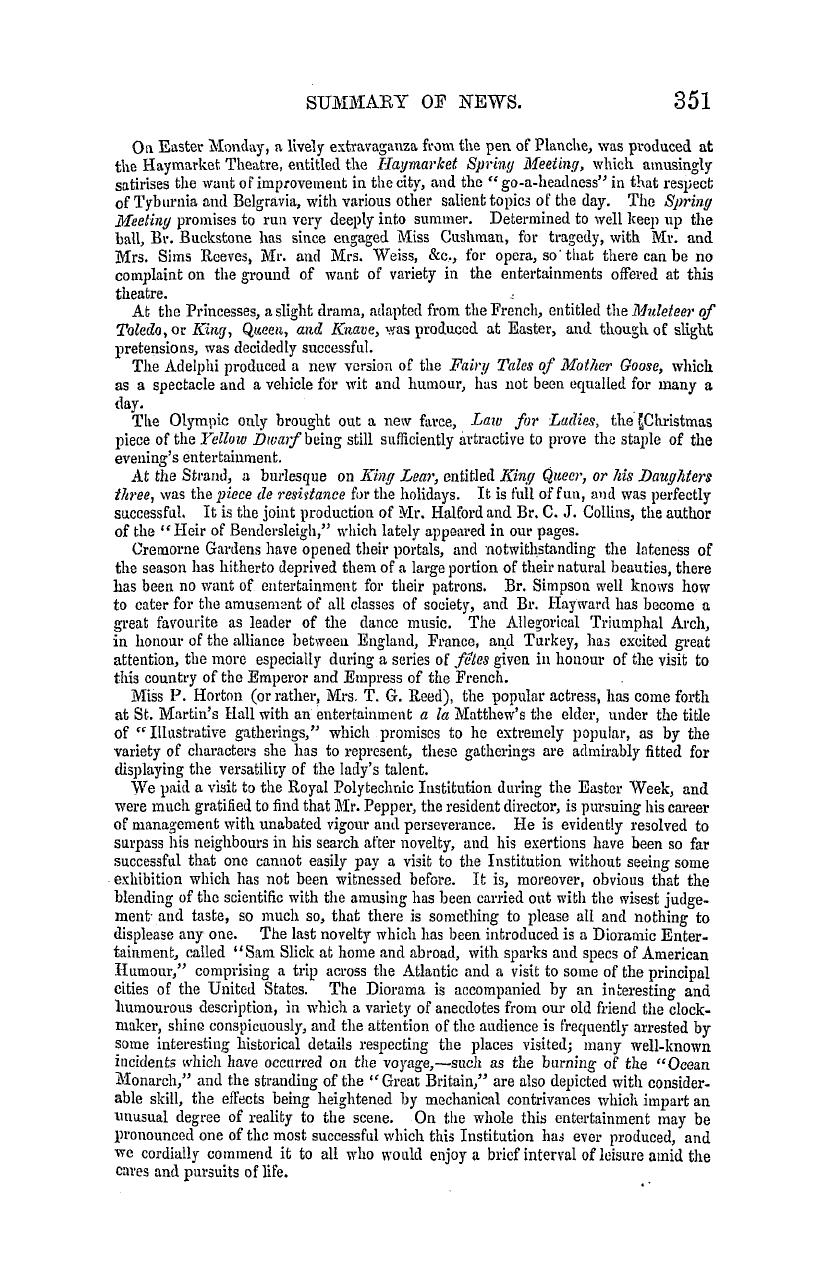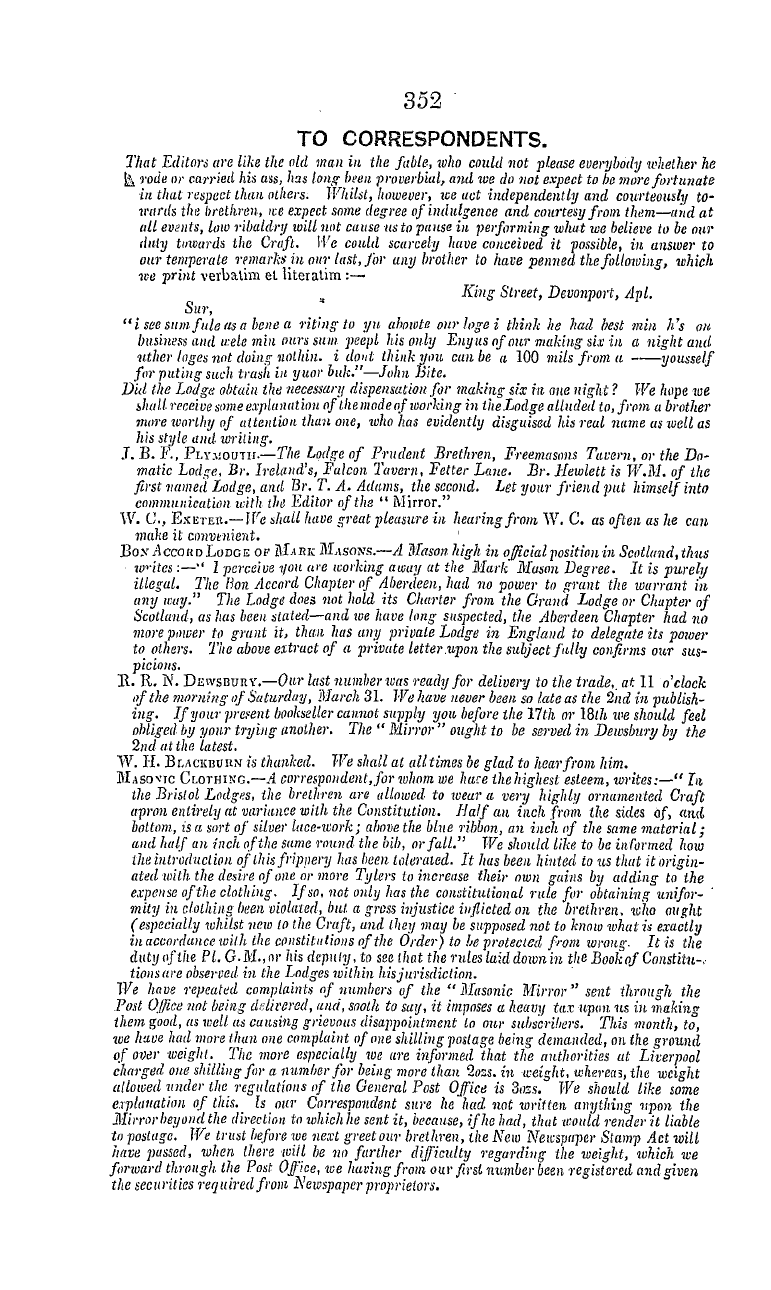-
Articles/Ads
Article FREEMASONRY IN ENGLAND. ← Page 3 of 6 →
Note: This text has been automatically extracted via Optical Character Recognition (OCR) software.
Freemasonry In England.
and to be the centre of the town , from whence sixty streets were to lead to the principal parts of the city . The quays on the banks of the Thames to be open , continuous , and convenient , with docks for the reception of barges heavily laden . The churches to be constructed in the best manner for the convenience and hearing of their congregations , to be adorned with porticos , towers , and steeples ; all churchyards , gardens , ancl unnecessary
vacuities , and all trades using great fires , or yielding unwholesome smells , to be excluded from the town . A plan Avas constructed ancl laid before the King and House of Commons , exemplifying those arrangements , and explanations given as to the practicability of carrying them out ; but it unfortunately met with great opposition from those who had for a number of years been accustomed to '
carry on their business on a certain site , and could not , or would not understand the necessity of the change , and distrusted the giving up their properties into the hands of public trustees , until they ivere certain of an equivalent . Hence the representation of these improvements was lost on the citizens , who were disposed rather to have their old city again , under all its disadvantages , than one which they were ' not only unable but unwilling
to understand . In consequence of this feeling , the opportunity was lost , of making it not only the most commodious , but the most healthy city in the world ; and it ivas only ivith extreme labour and difficulty , that the ultimate arrangements for its construction were made . Among the public buildings of the city when rebuilt , most worthy of notice , was the Custom House for the Port of London , situated on the
south side of Thames Street , ancl erected 1668 . It was adorned with an upper and a lower order of architecture ; in the latter were stone columns , and entablement of the Tuscan Order ; in the former , pilasters , entabliture , and five pediments of the Ionic Order . The wings were elevated on columns , forming piazzas . The length of the building was 189 feet , breadth in the middle part 27 feet , and at the west end , fee ., 60 feet .
On the 13 th of October , 1667 , the King levelled the foot stone of the new Eoyal Exchange , in solemn form , and it was opened by the Mayor and Aldermen , on the 28 th September , 1669 . Bound the inside of the square , above the arcades , ancl between the windows , were the statues of the Sovereigns of England . Afterwards , the merchant adventurers employed the Grand Warder , Gibbons , to erect in the middle of the square the statue of the King , in a Csesarean habit , sculptured in white marble ; with the following inscription : —
Carole Secundo Csesari Britannico Patriae Patri Kegum Optimo Cletnentissimo Augustissimo Generis Humani Delieiis Uti-iusciuo Fortunse Victori Pacis Europas Arbitro Maris Domino Ac Vindici Soeietas Mercatoi-um Adventer Angliie Quas Par CCCC lam Prope Annos Regia Benignitate Floret
Note: This text has been automatically extracted via Optical Character Recognition (OCR) software.
Freemasonry In England.
and to be the centre of the town , from whence sixty streets were to lead to the principal parts of the city . The quays on the banks of the Thames to be open , continuous , and convenient , with docks for the reception of barges heavily laden . The churches to be constructed in the best manner for the convenience and hearing of their congregations , to be adorned with porticos , towers , and steeples ; all churchyards , gardens , ancl unnecessary
vacuities , and all trades using great fires , or yielding unwholesome smells , to be excluded from the town . A plan Avas constructed ancl laid before the King and House of Commons , exemplifying those arrangements , and explanations given as to the practicability of carrying them out ; but it unfortunately met with great opposition from those who had for a number of years been accustomed to '
carry on their business on a certain site , and could not , or would not understand the necessity of the change , and distrusted the giving up their properties into the hands of public trustees , until they ivere certain of an equivalent . Hence the representation of these improvements was lost on the citizens , who were disposed rather to have their old city again , under all its disadvantages , than one which they were ' not only unable but unwilling
to understand . In consequence of this feeling , the opportunity was lost , of making it not only the most commodious , but the most healthy city in the world ; and it ivas only ivith extreme labour and difficulty , that the ultimate arrangements for its construction were made . Among the public buildings of the city when rebuilt , most worthy of notice , was the Custom House for the Port of London , situated on the
south side of Thames Street , ancl erected 1668 . It was adorned with an upper and a lower order of architecture ; in the latter were stone columns , and entablement of the Tuscan Order ; in the former , pilasters , entabliture , and five pediments of the Ionic Order . The wings were elevated on columns , forming piazzas . The length of the building was 189 feet , breadth in the middle part 27 feet , and at the west end , fee ., 60 feet .
On the 13 th of October , 1667 , the King levelled the foot stone of the new Eoyal Exchange , in solemn form , and it was opened by the Mayor and Aldermen , on the 28 th September , 1669 . Bound the inside of the square , above the arcades , ancl between the windows , were the statues of the Sovereigns of England . Afterwards , the merchant adventurers employed the Grand Warder , Gibbons , to erect in the middle of the square the statue of the King , in a Csesarean habit , sculptured in white marble ; with the following inscription : —
Carole Secundo Csesari Britannico Patriae Patri Kegum Optimo Cletnentissimo Augustissimo Generis Humani Delieiis Uti-iusciuo Fortunse Victori Pacis Europas Arbitro Maris Domino Ac Vindici Soeietas Mercatoi-um Adventer Angliie Quas Par CCCC lam Prope Annos Regia Benignitate Floret
